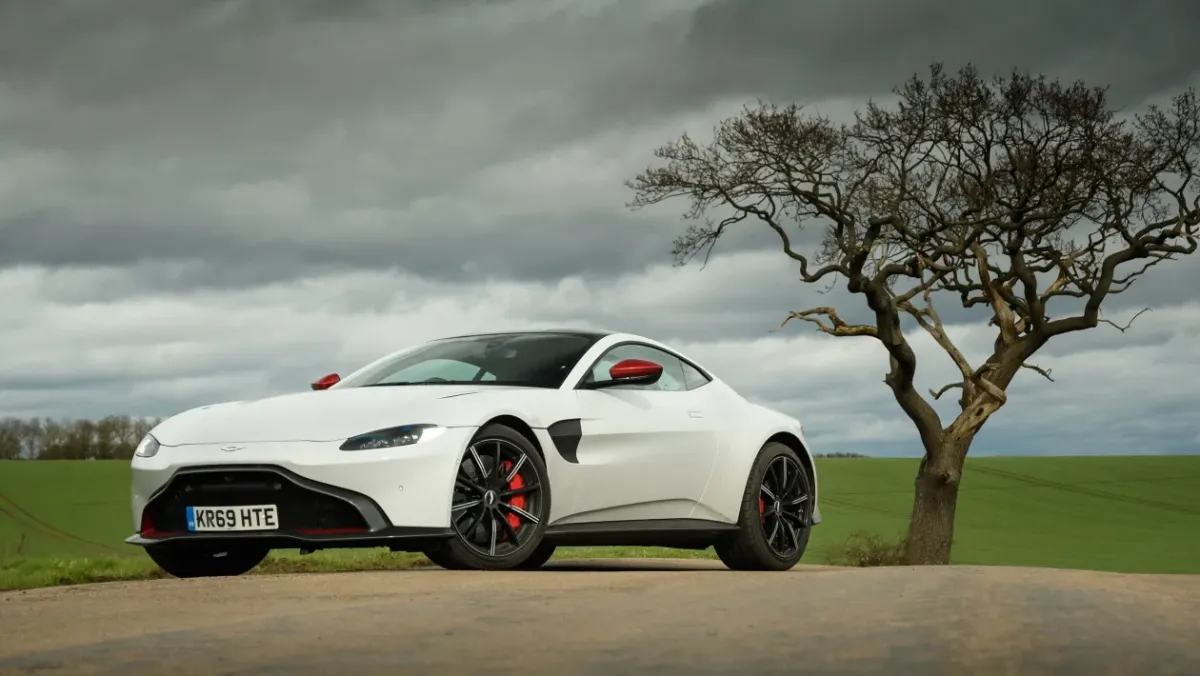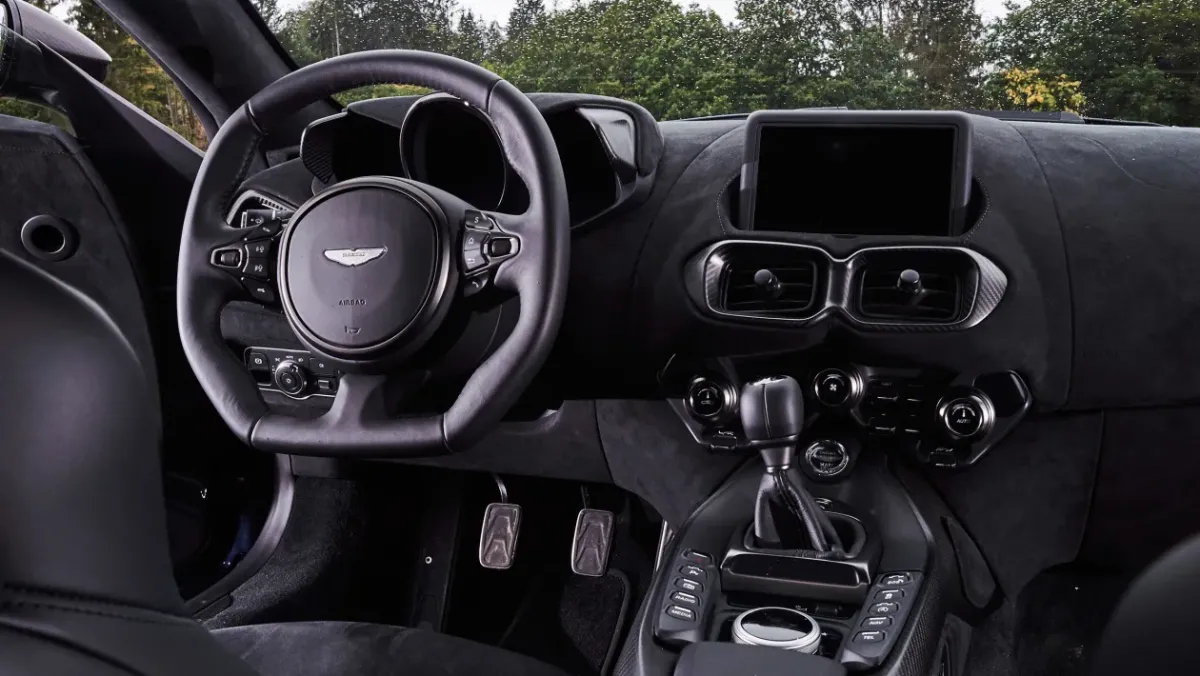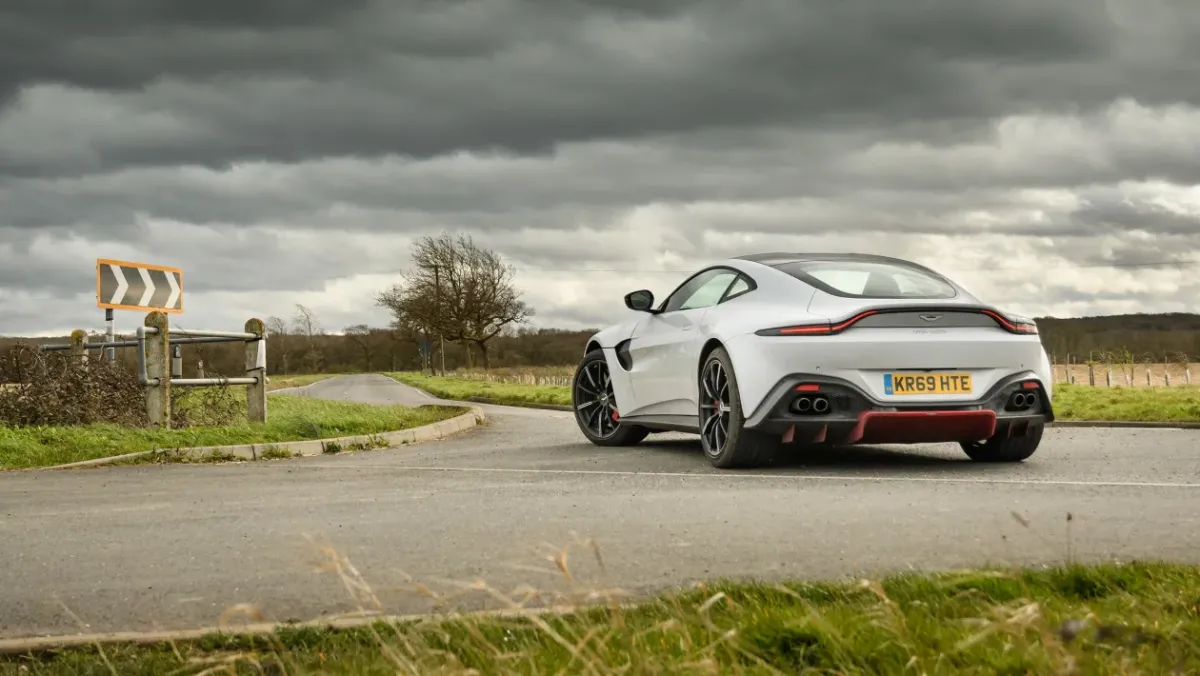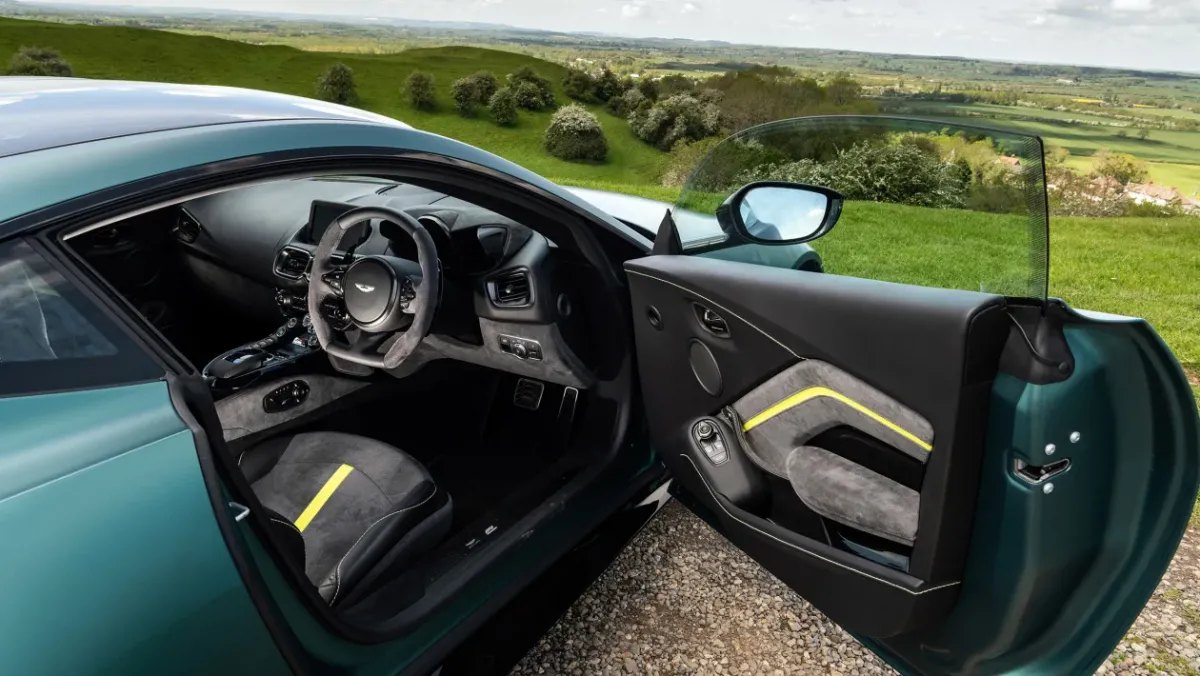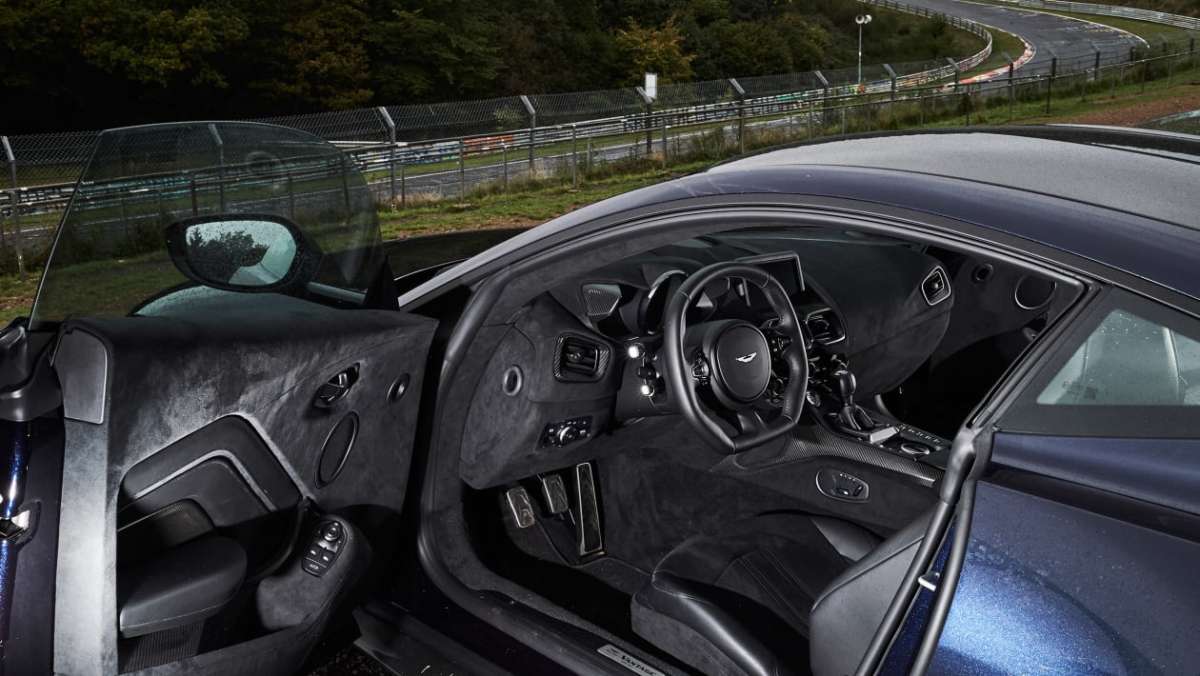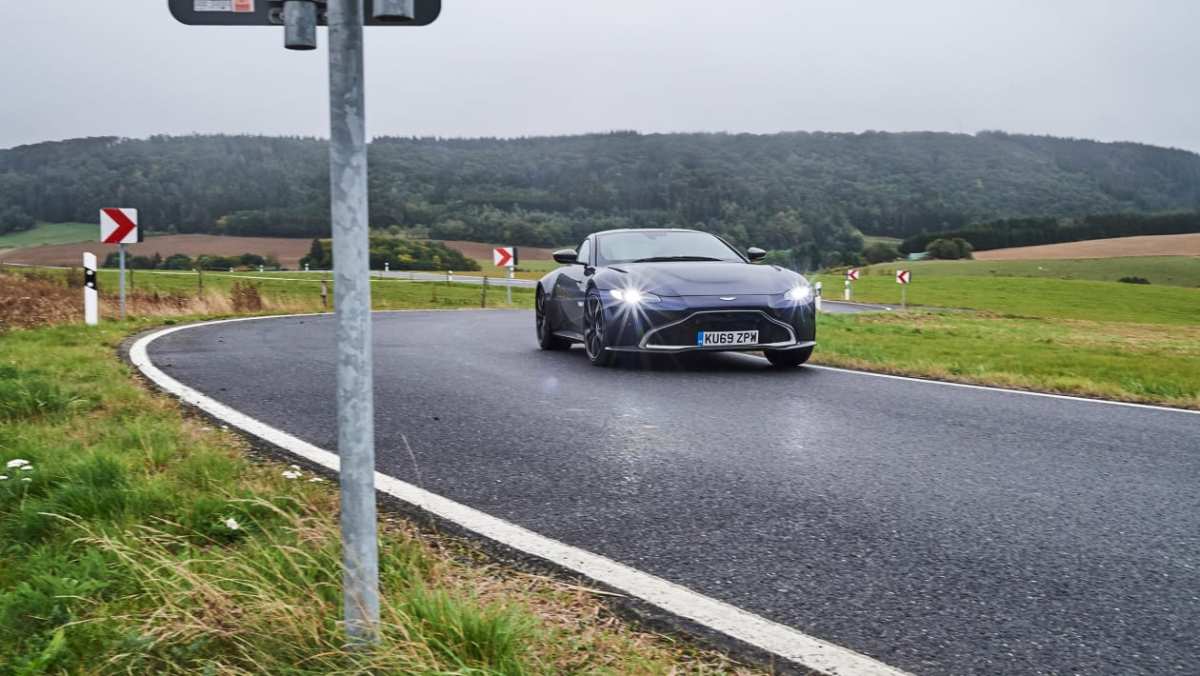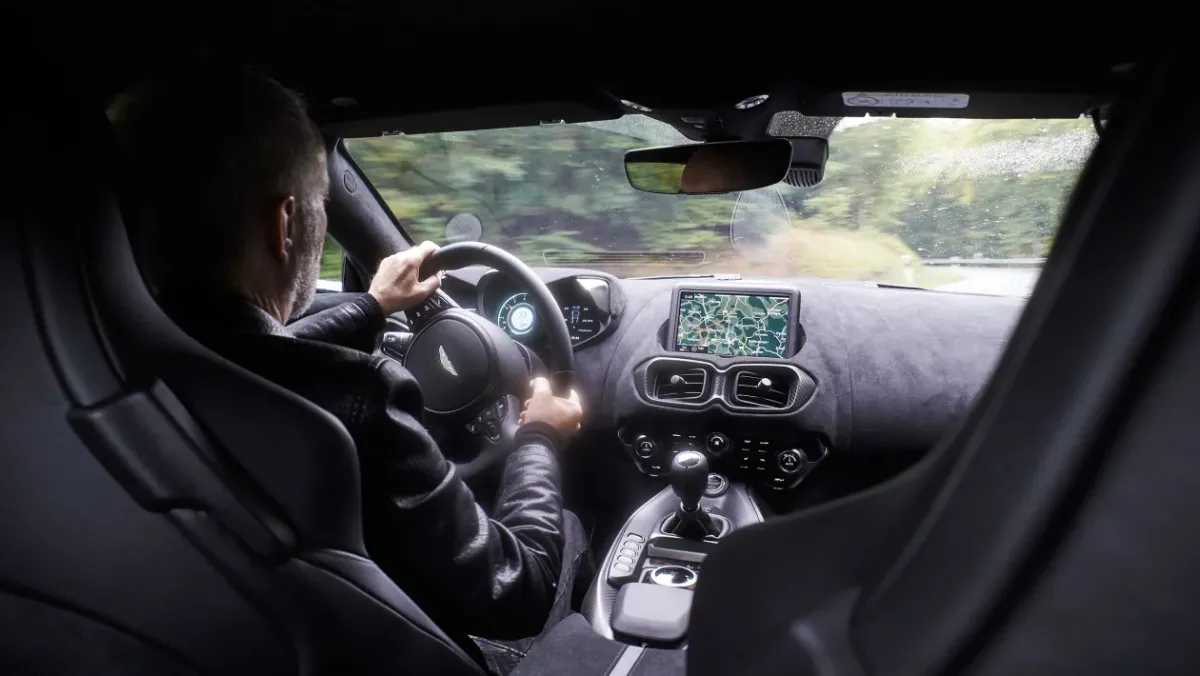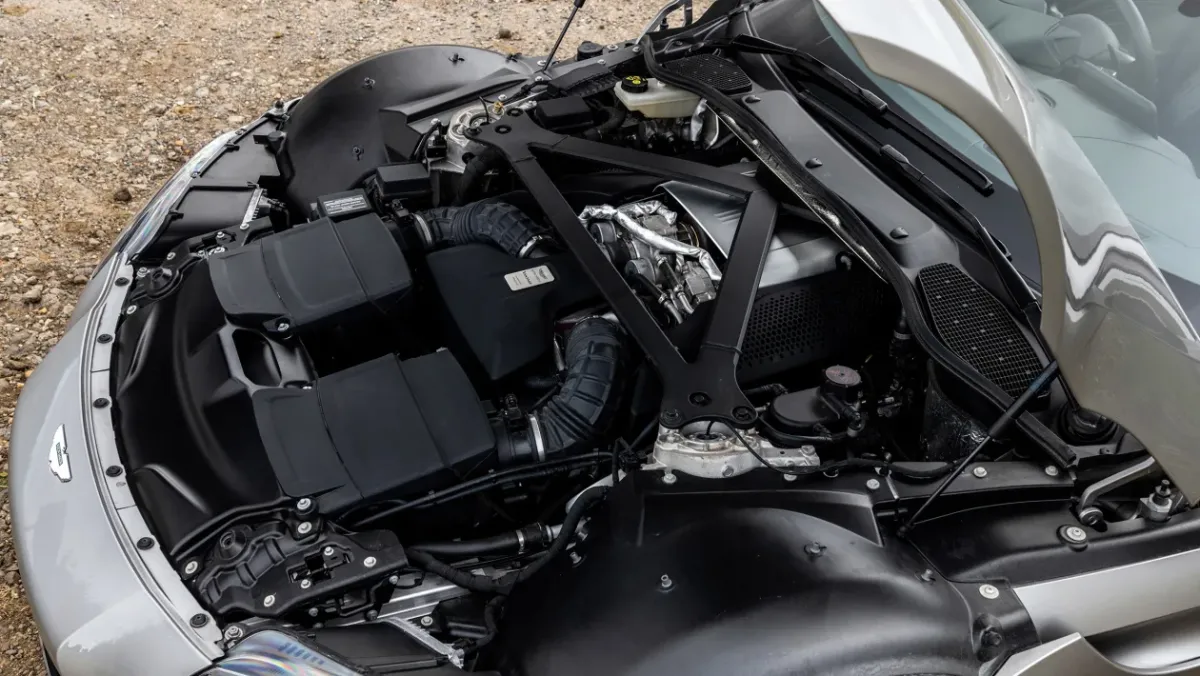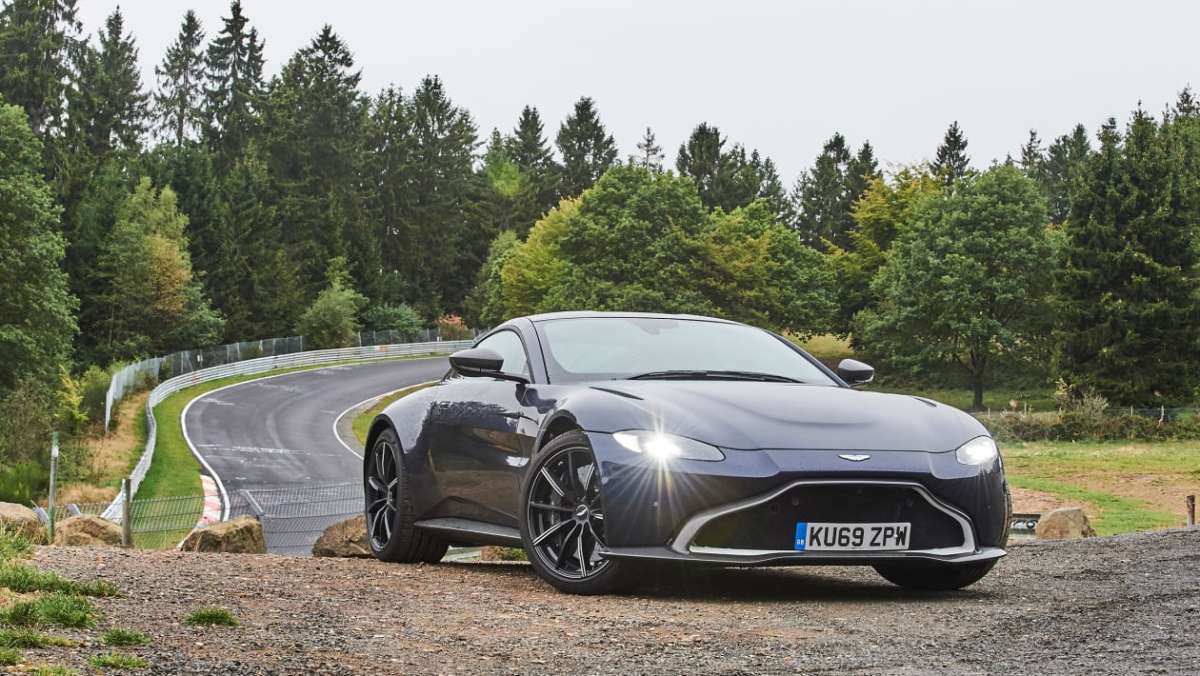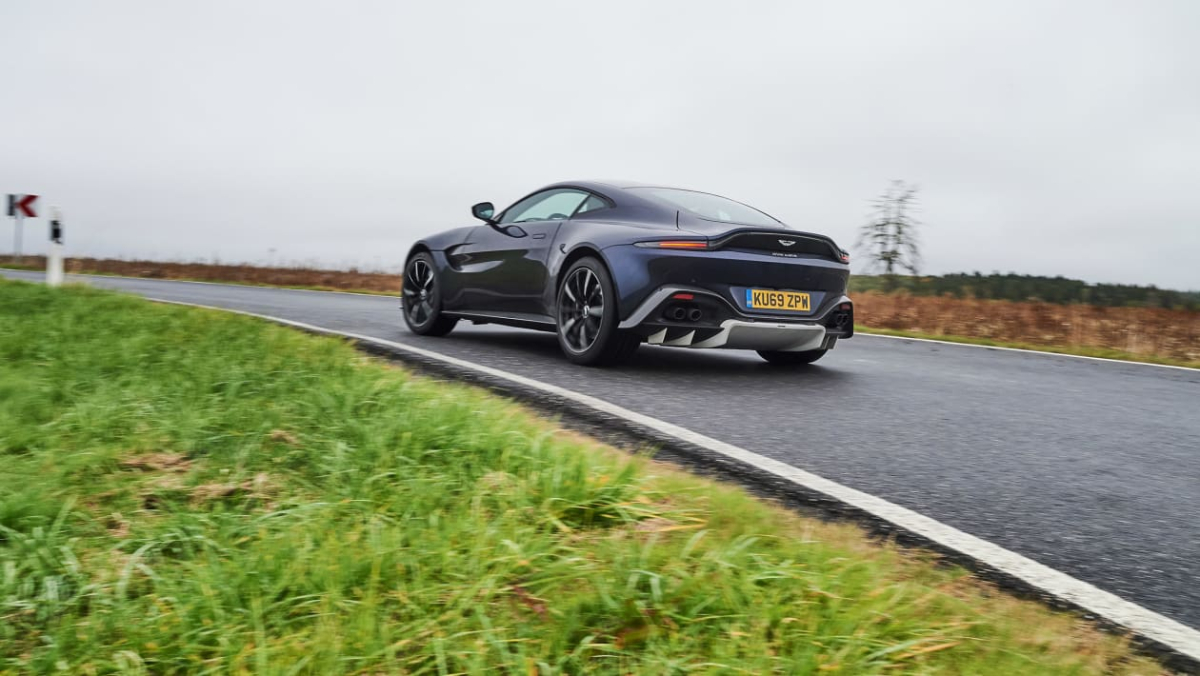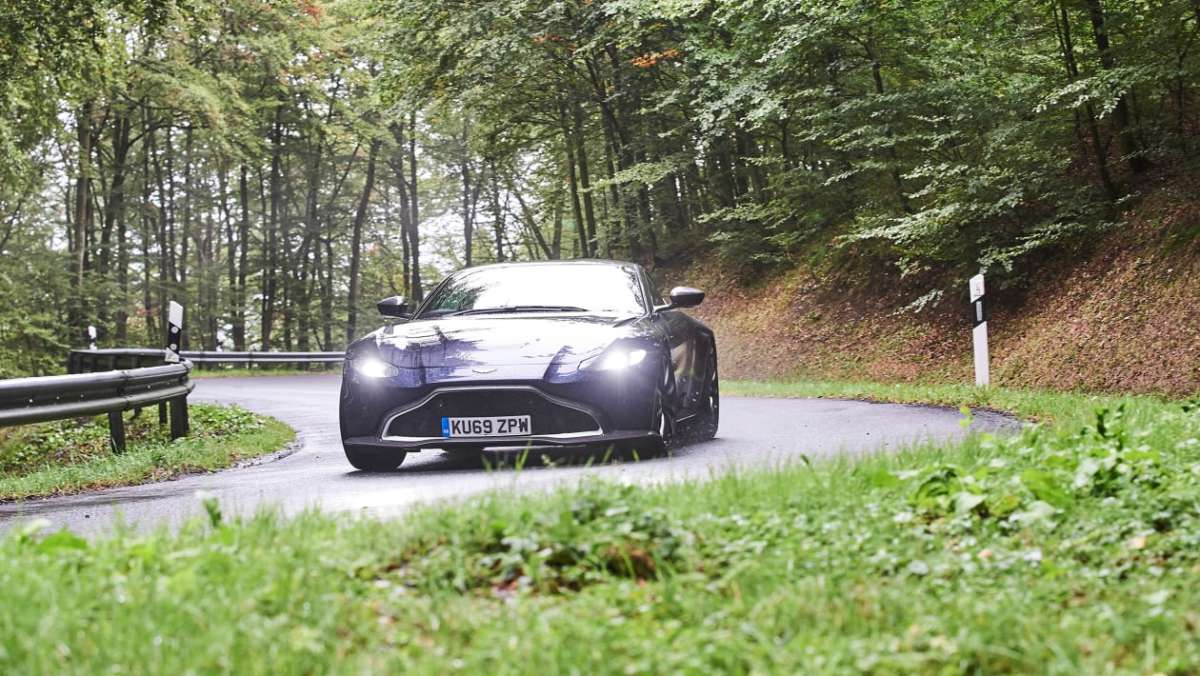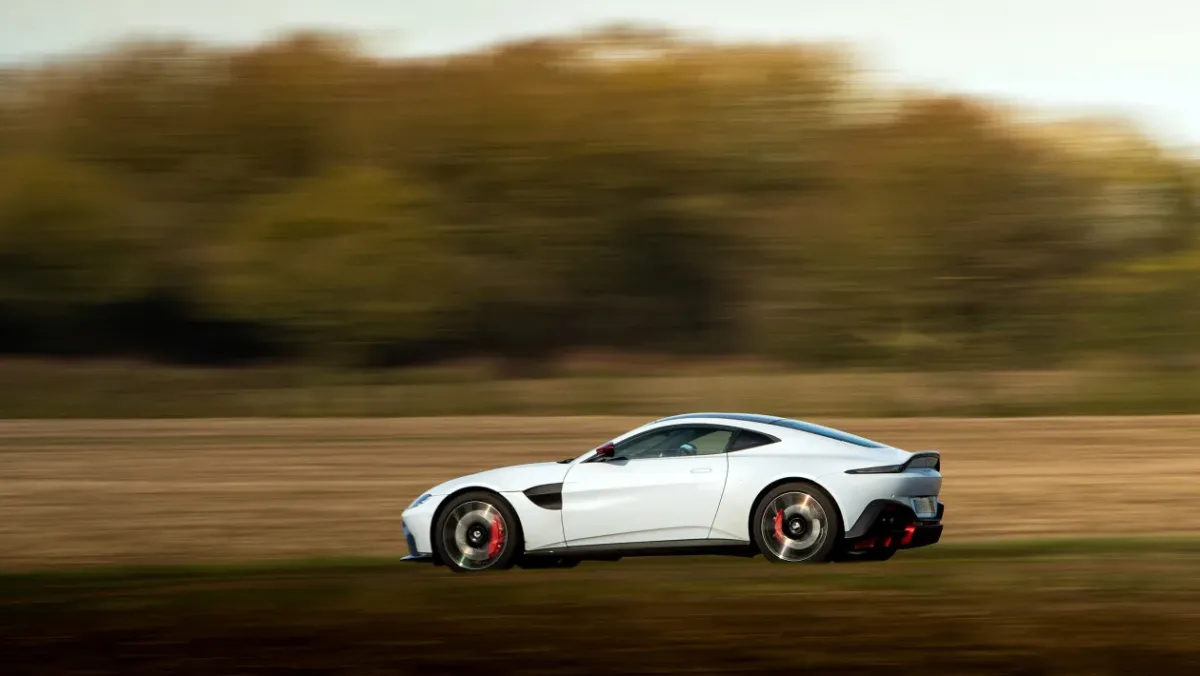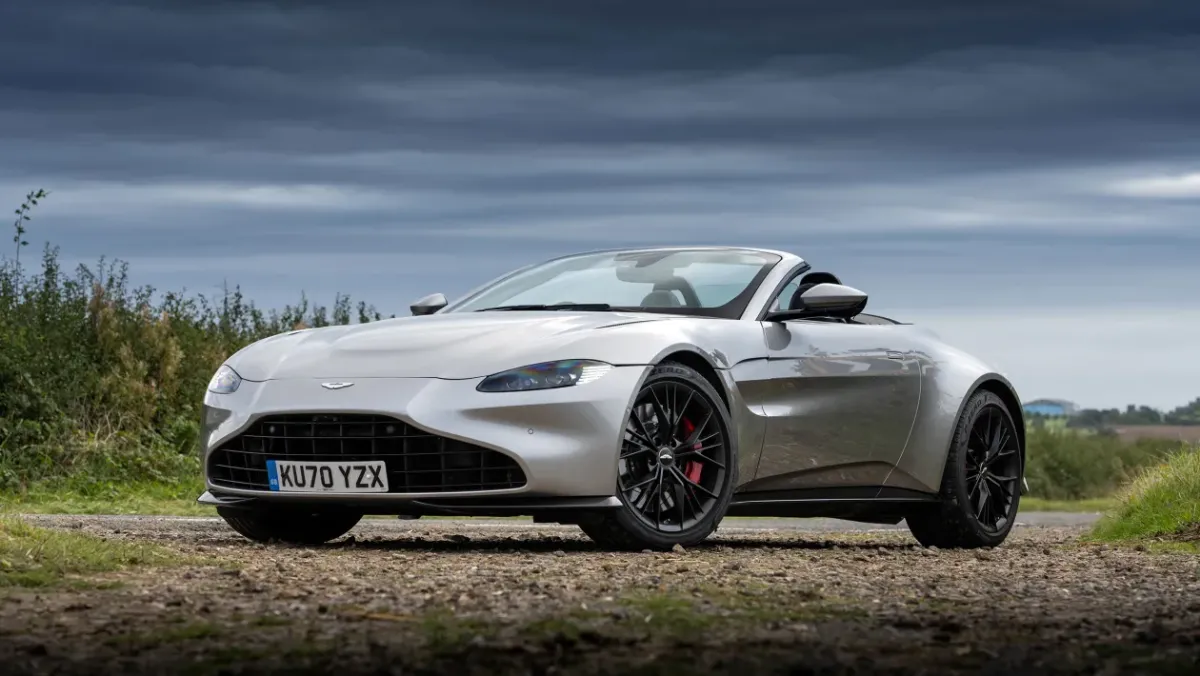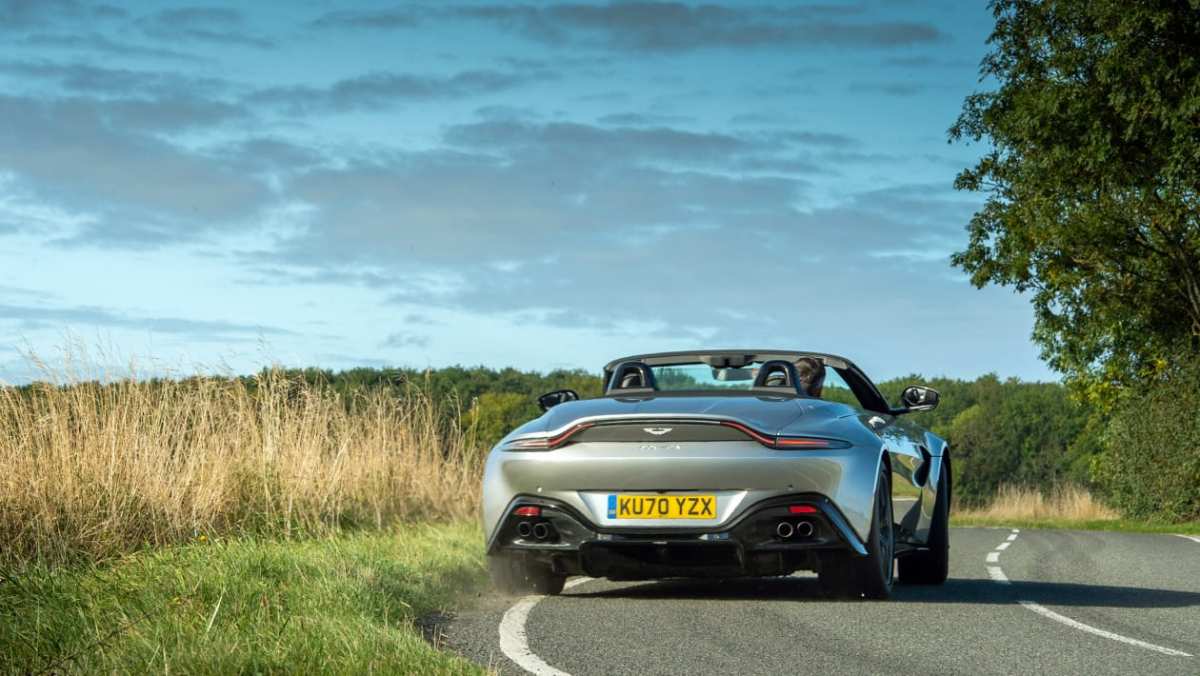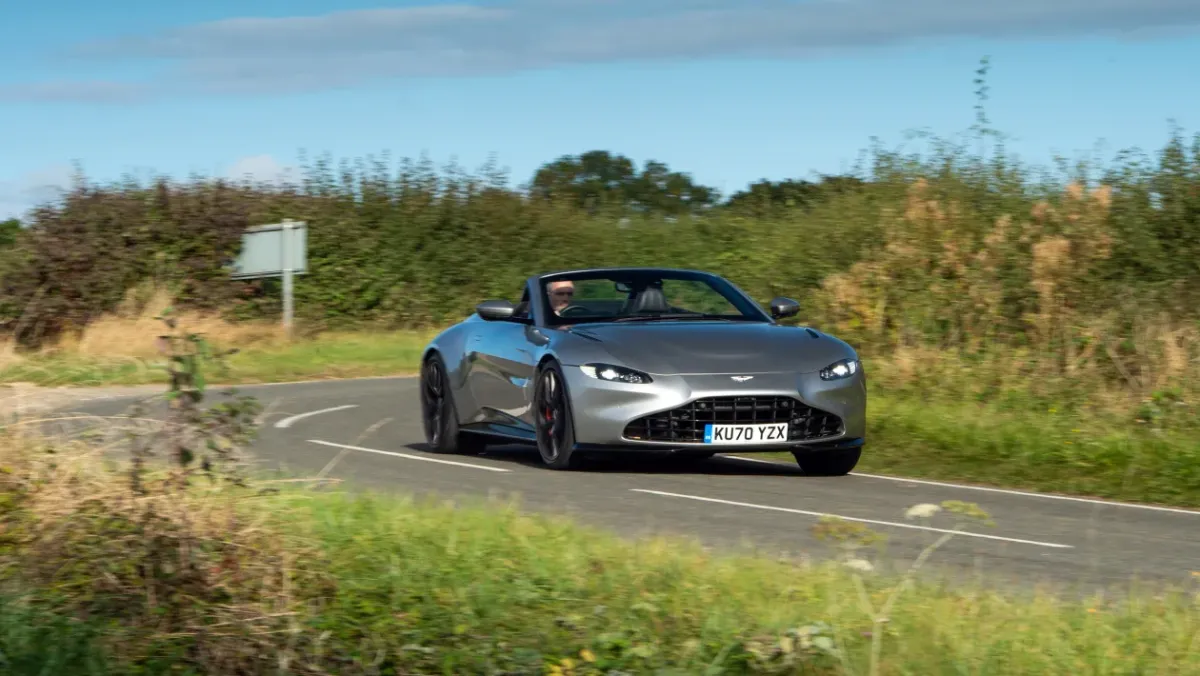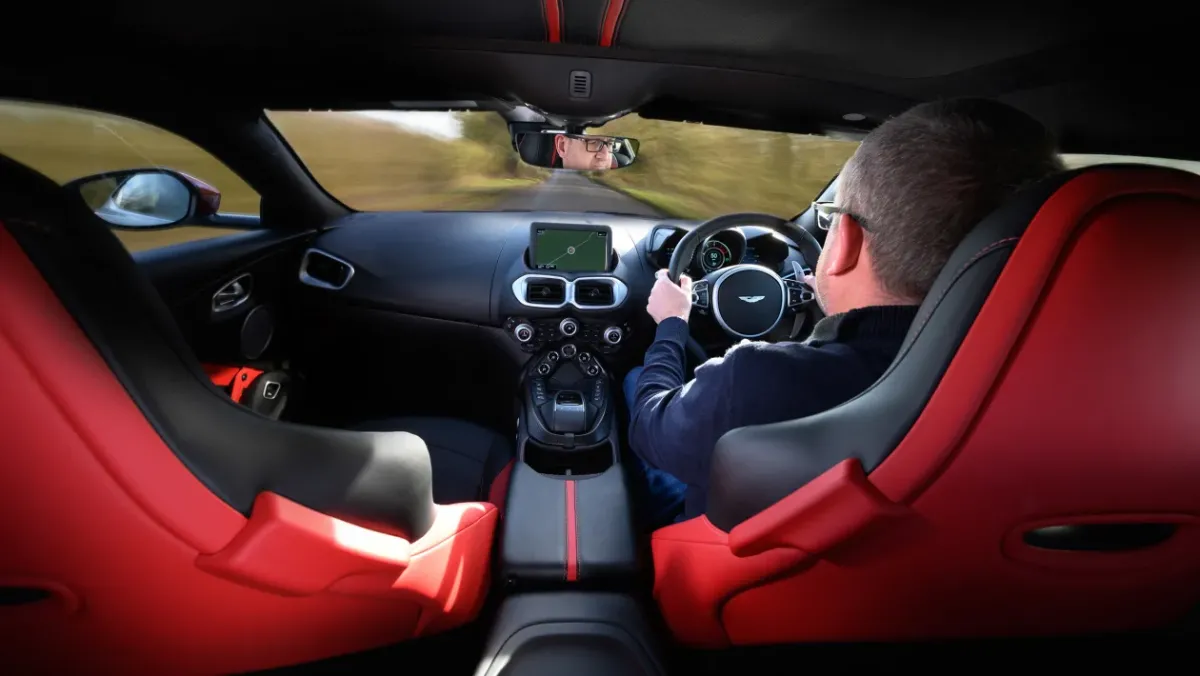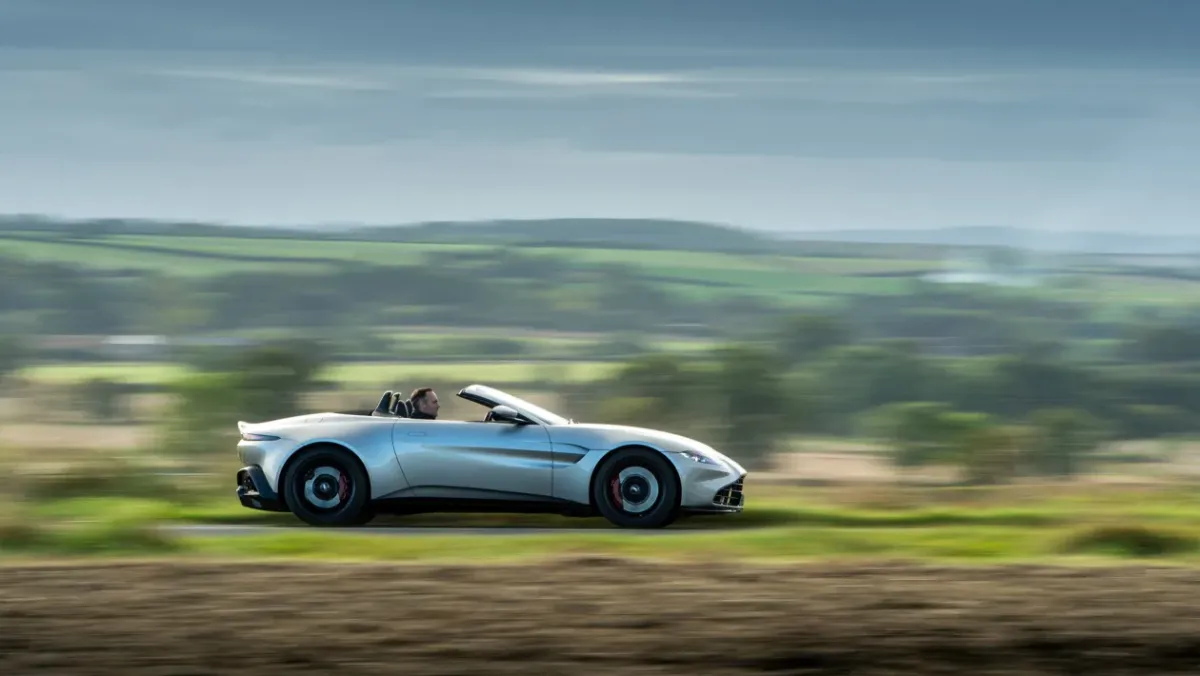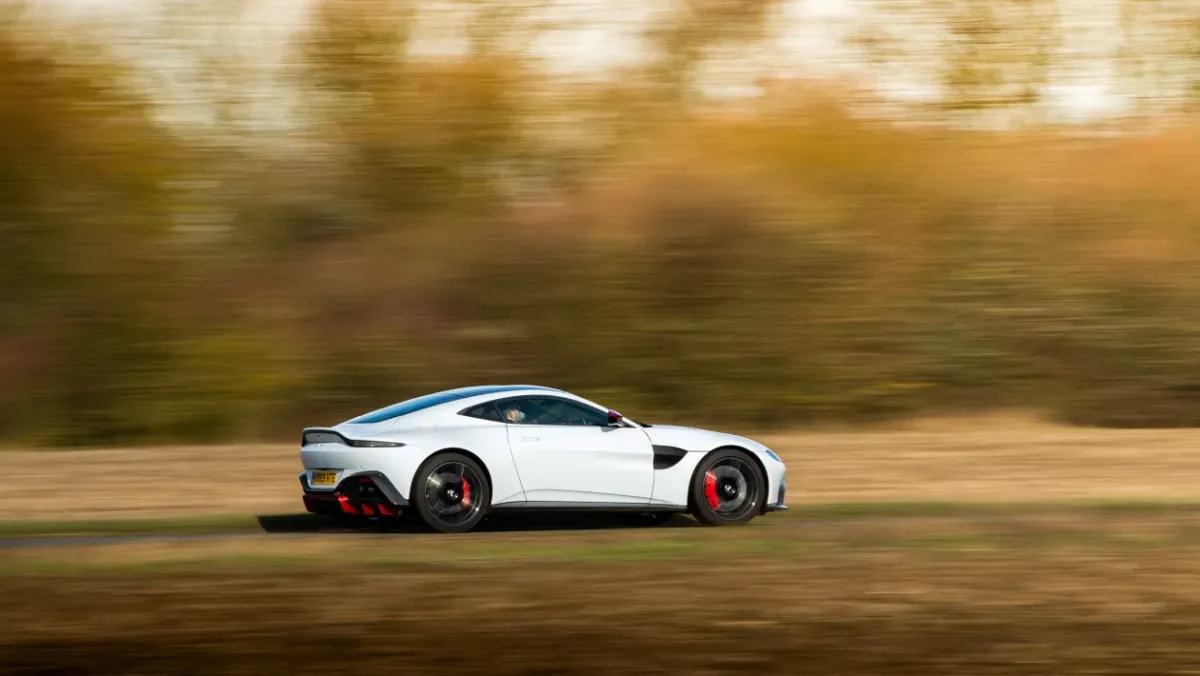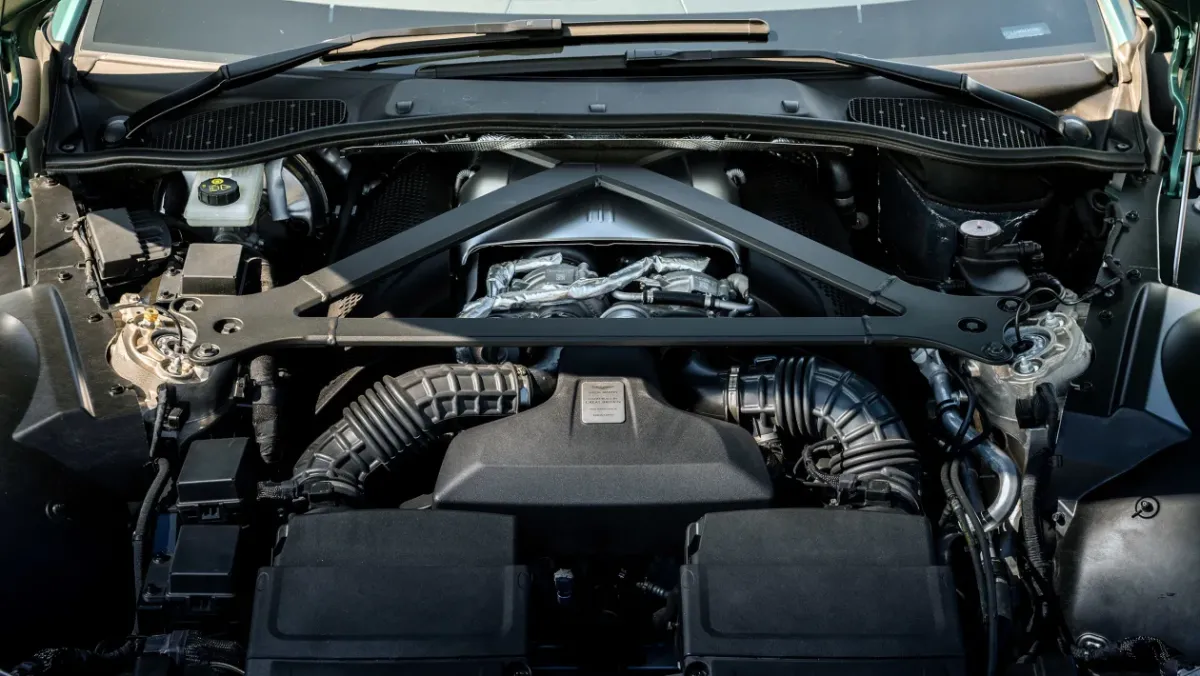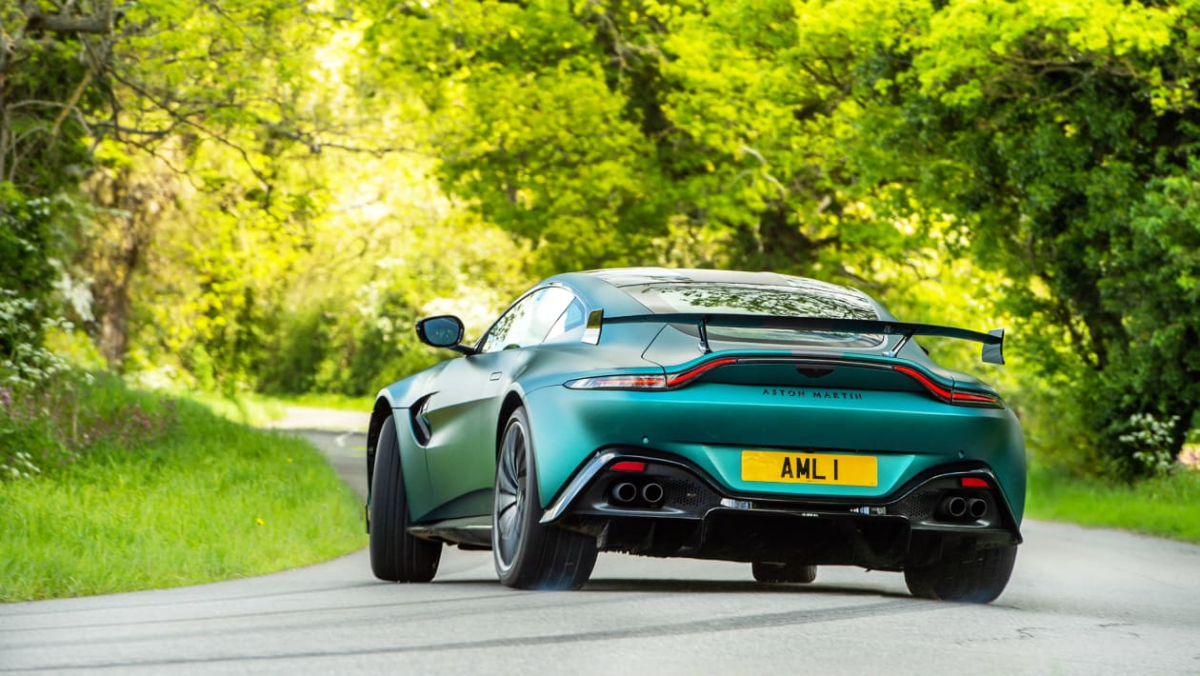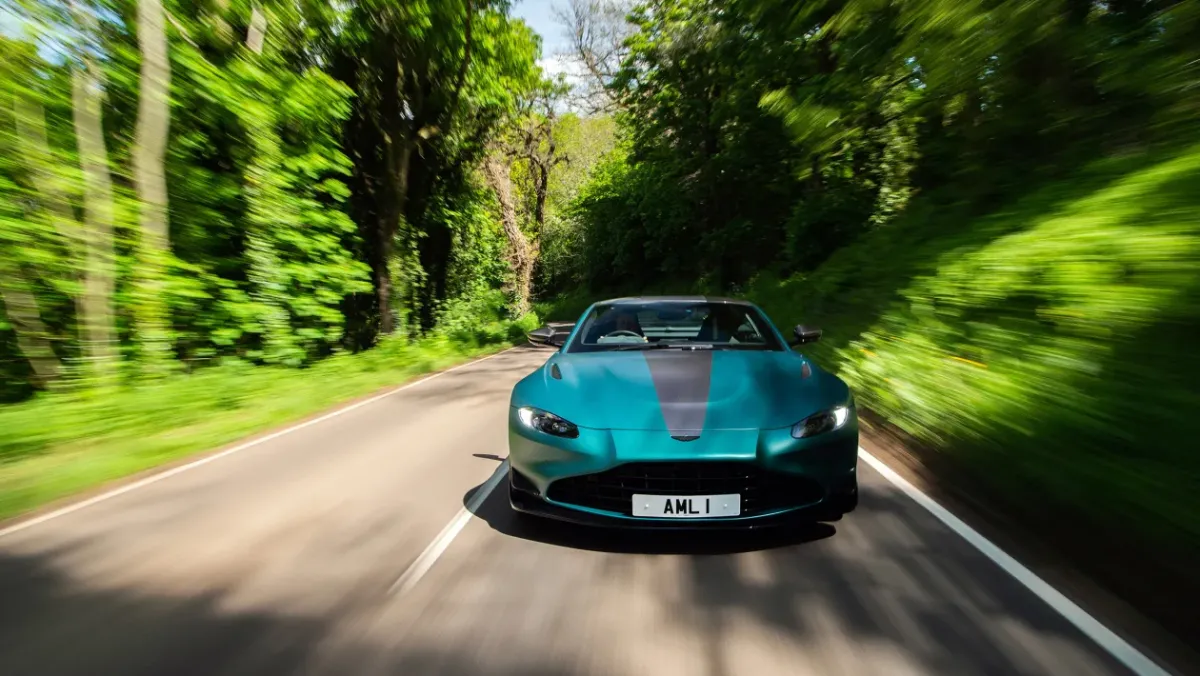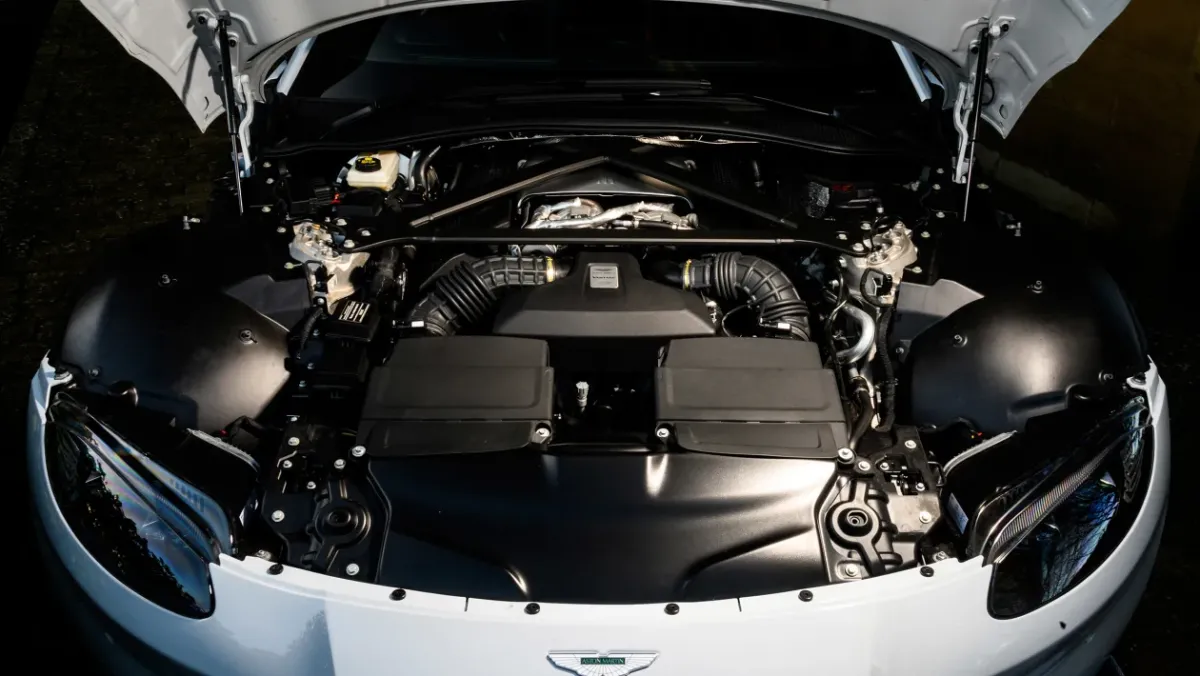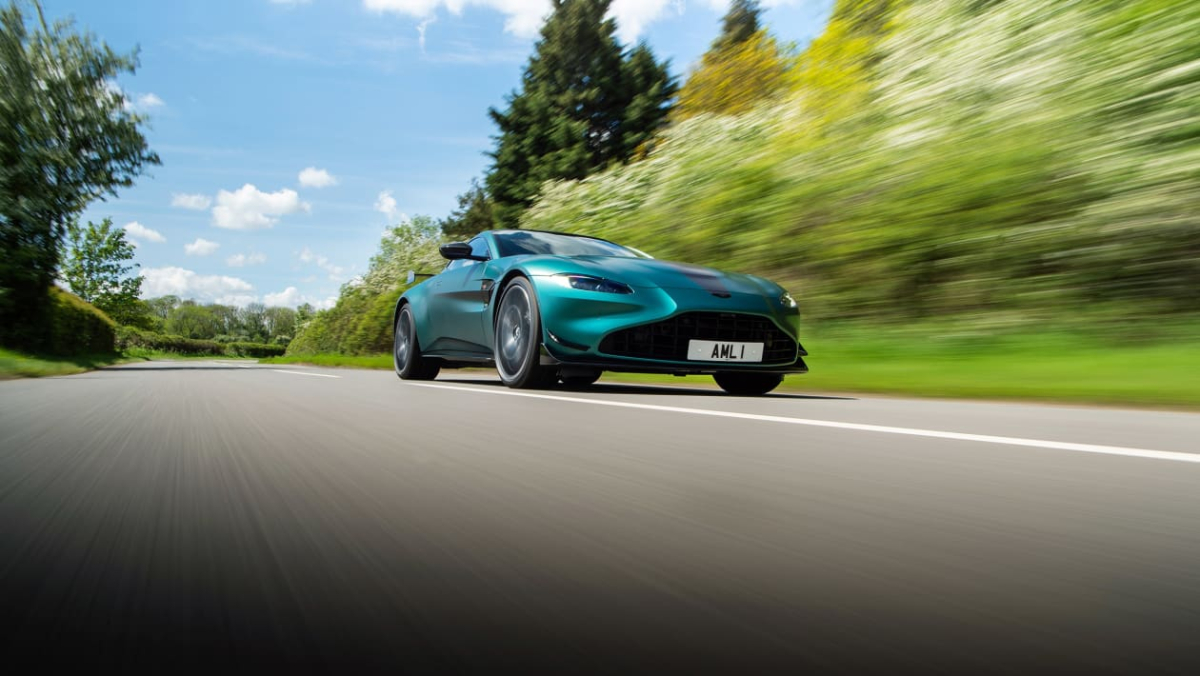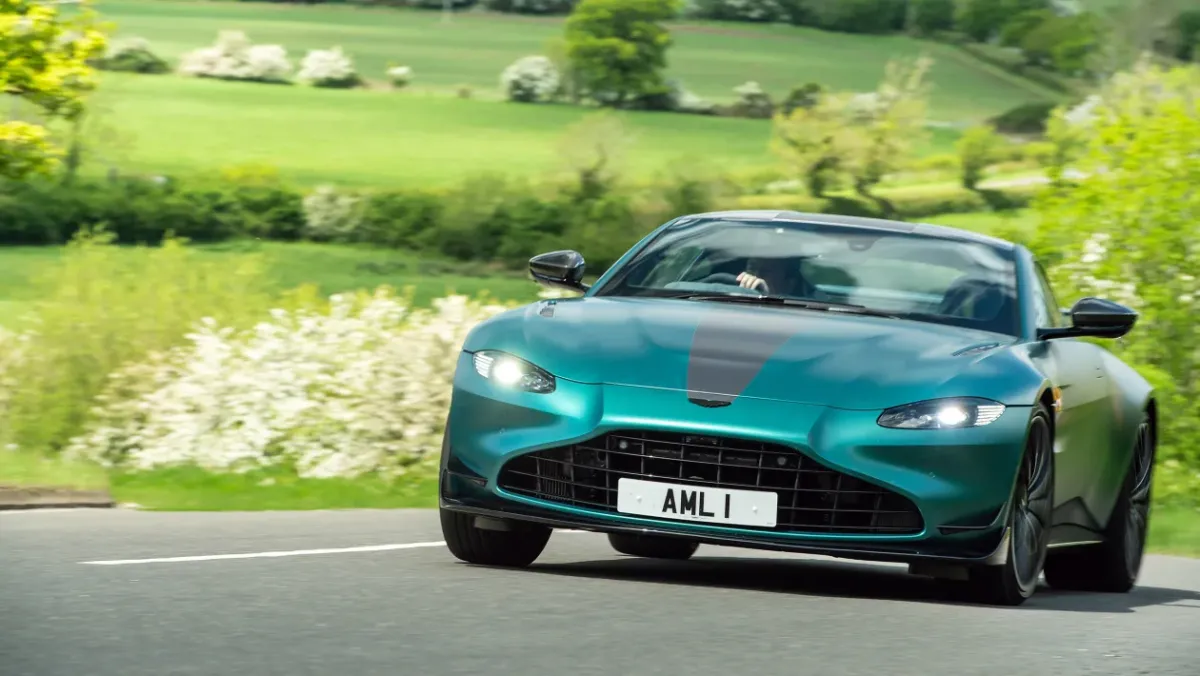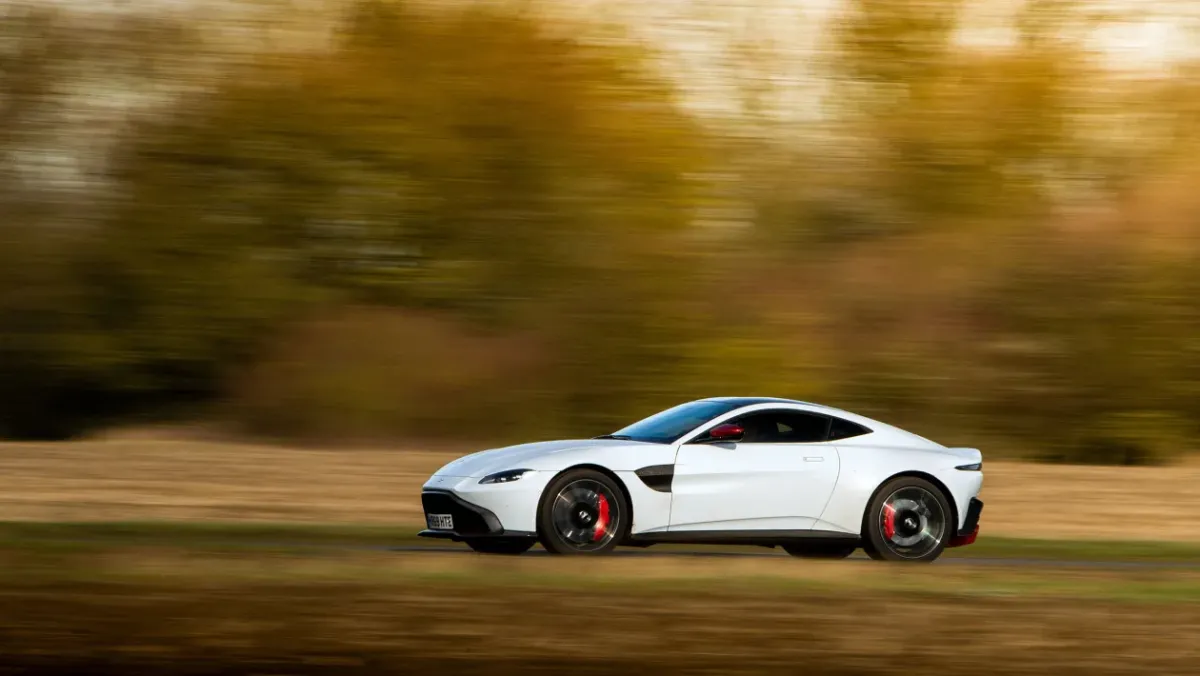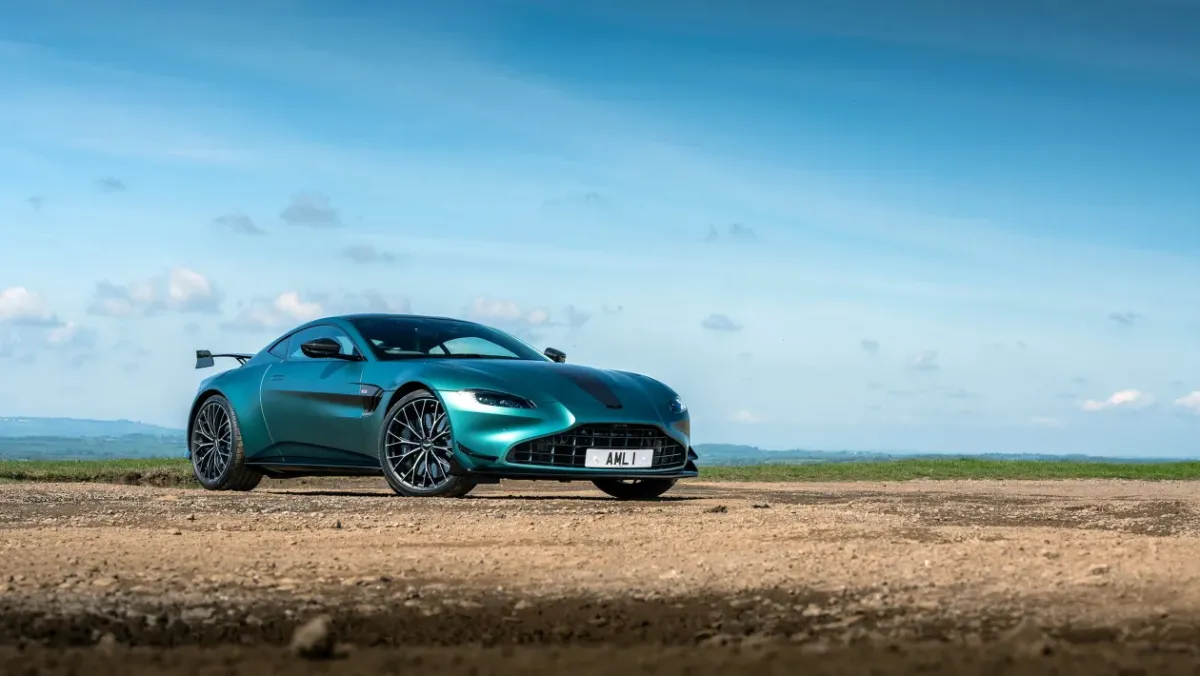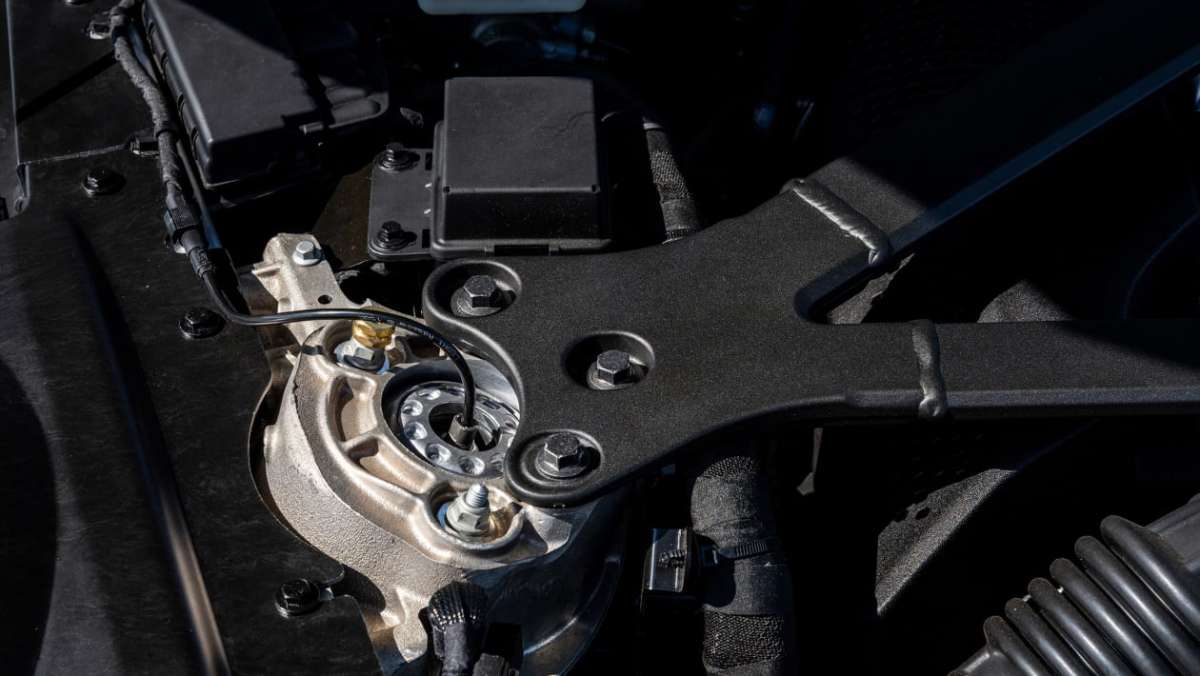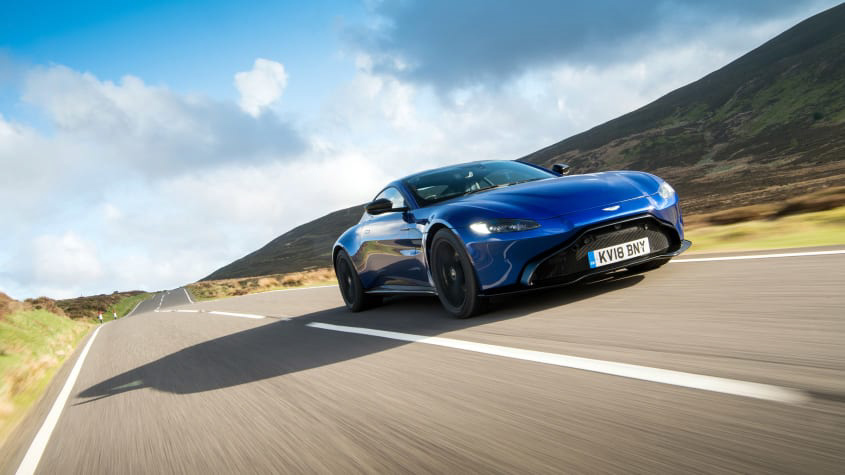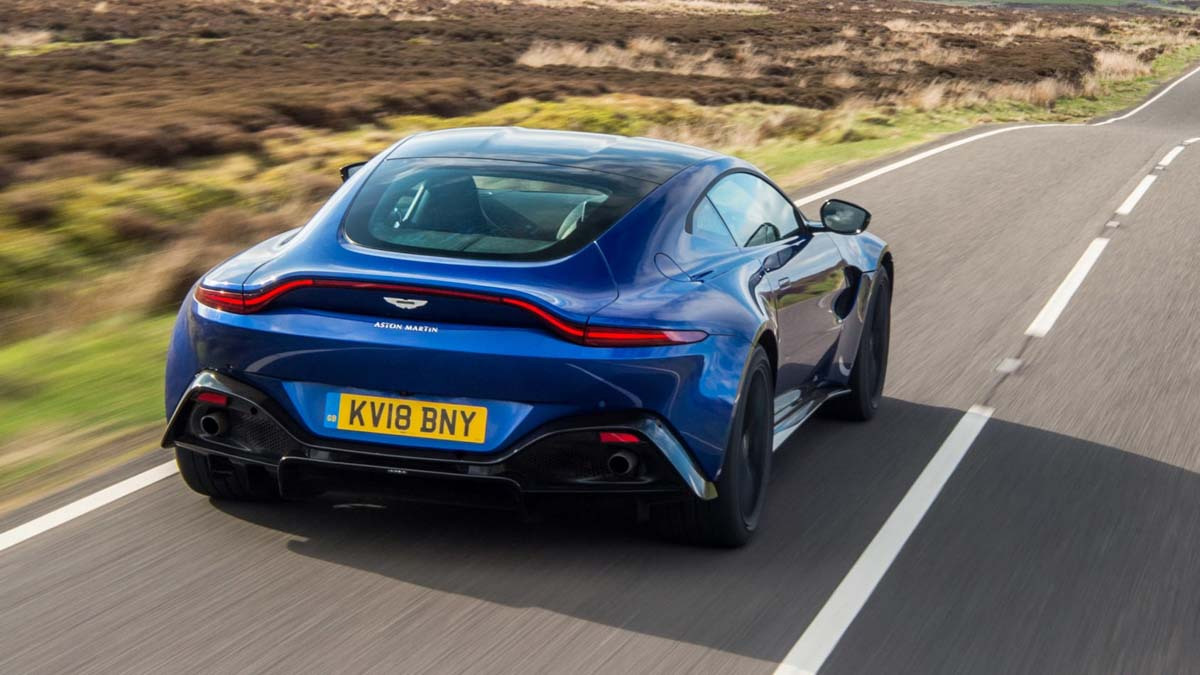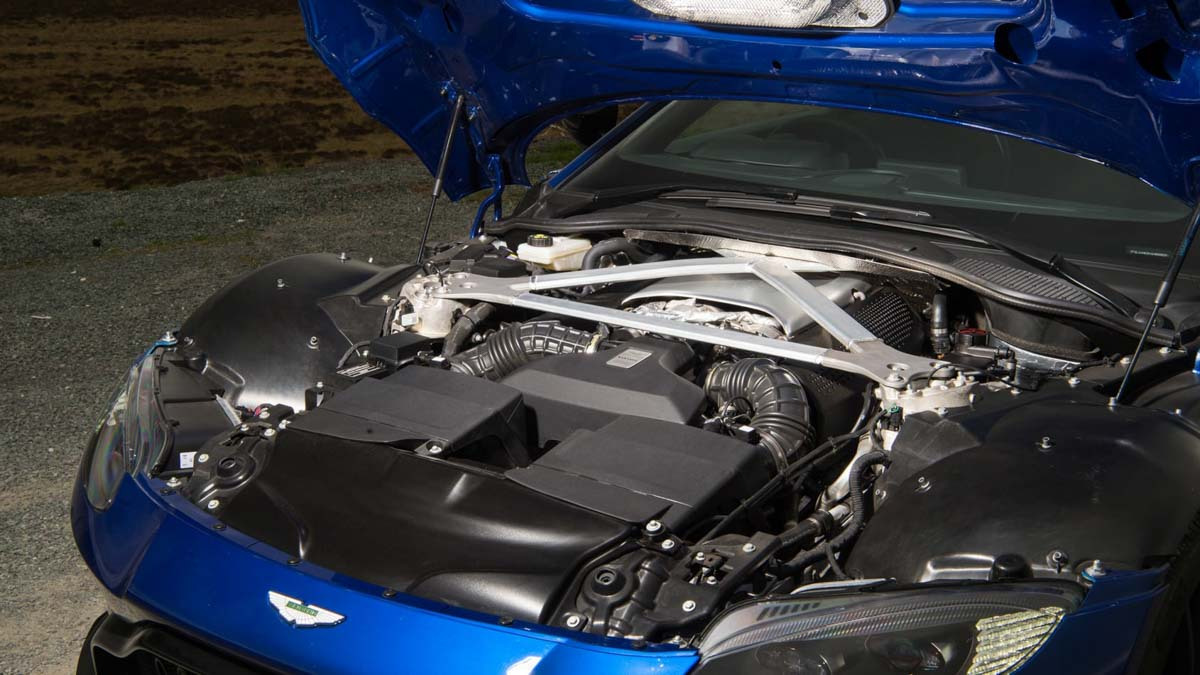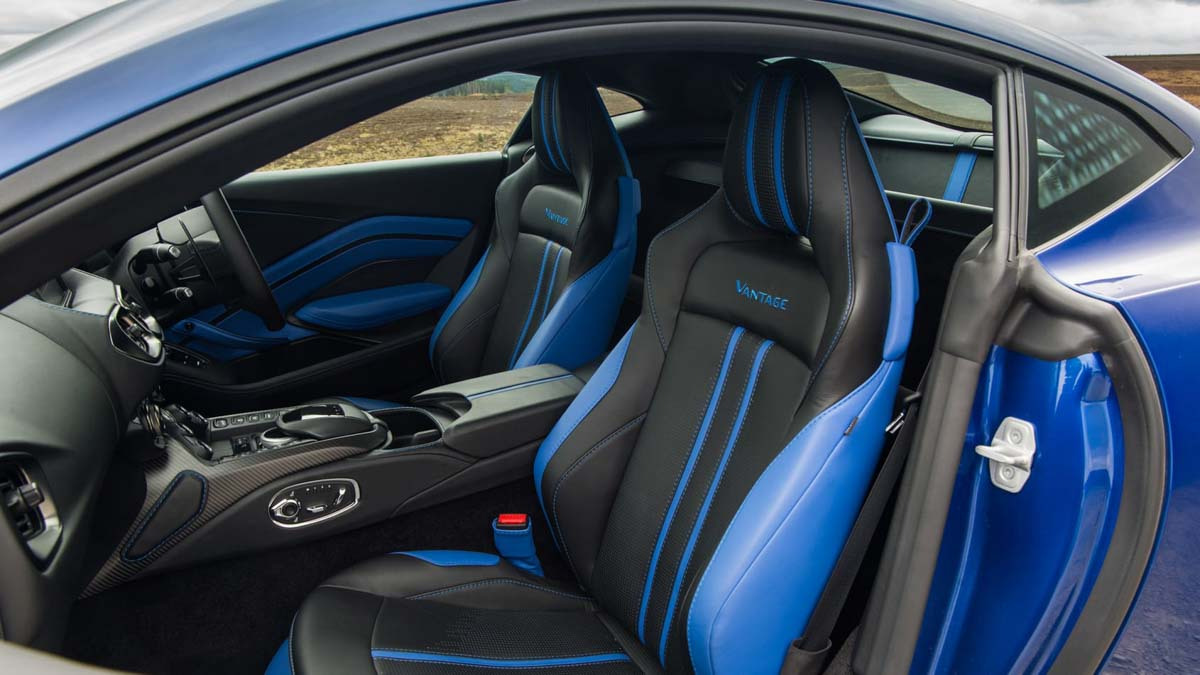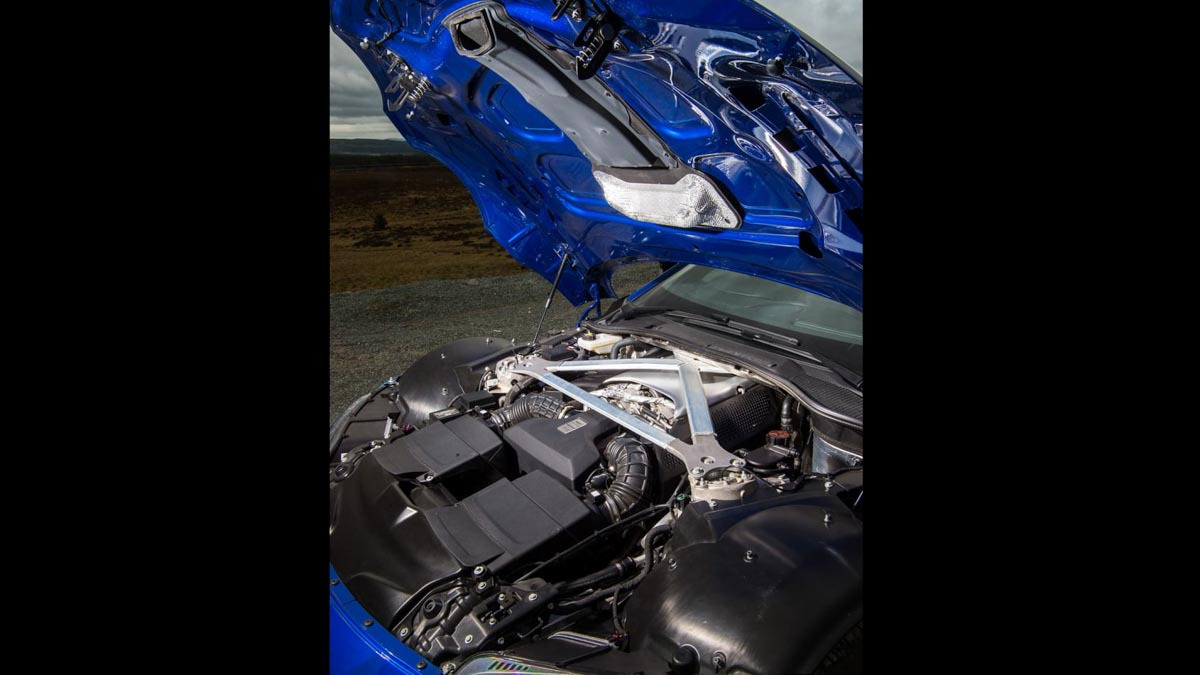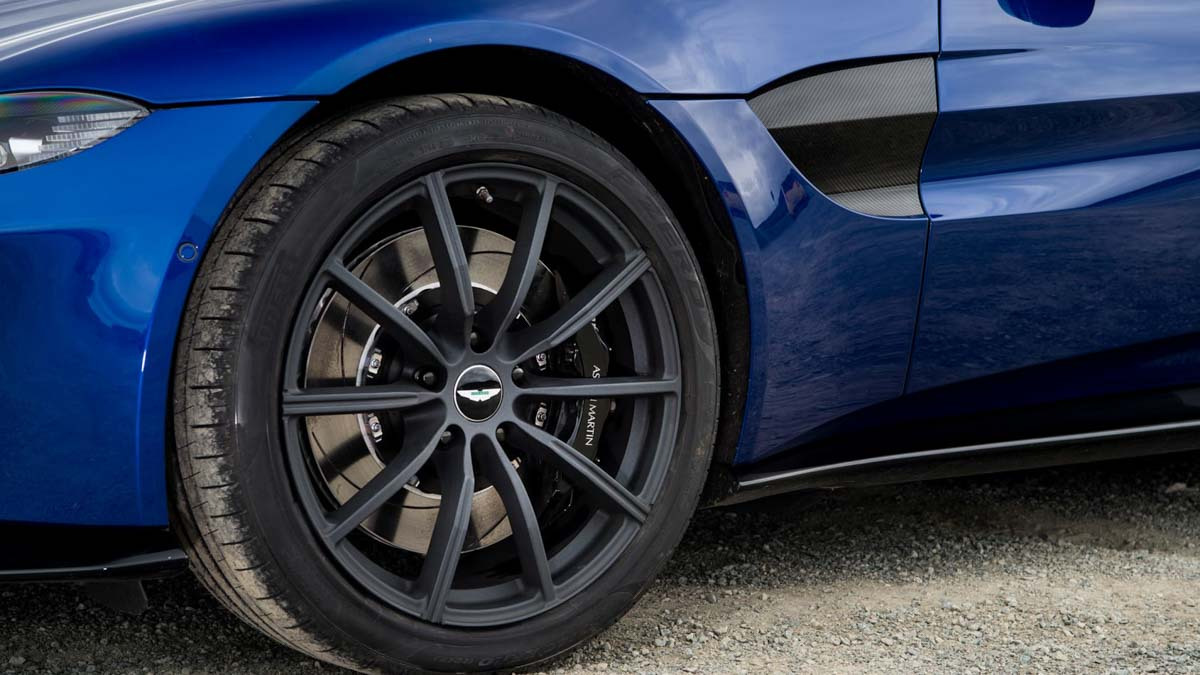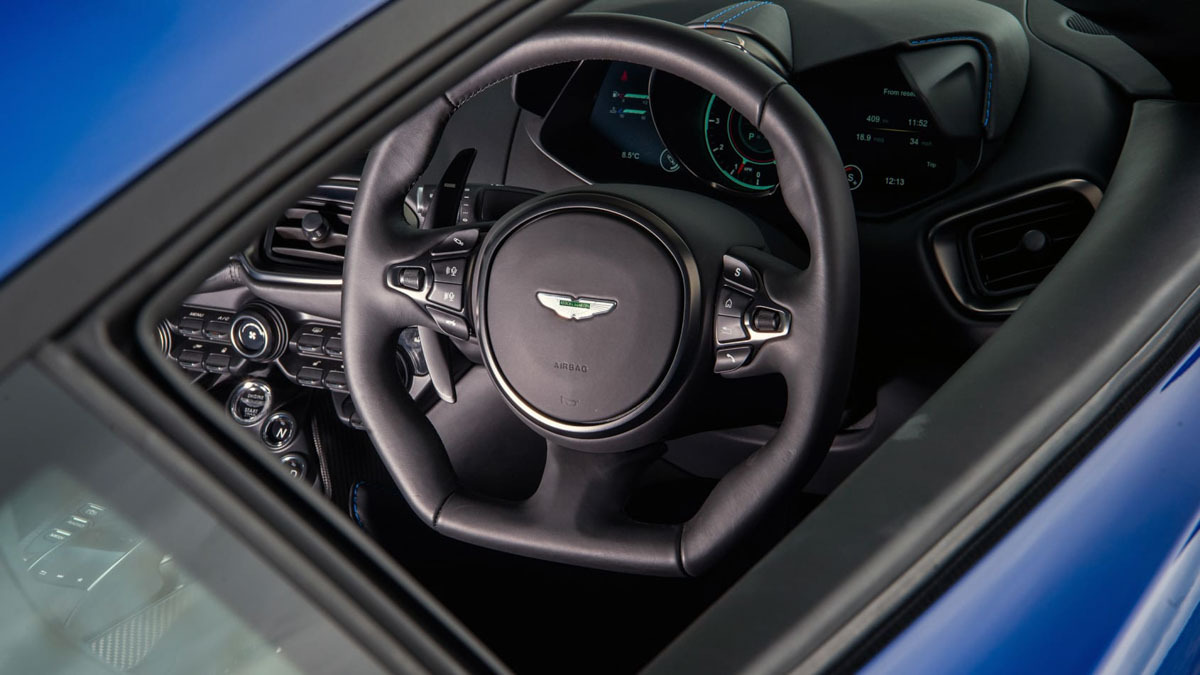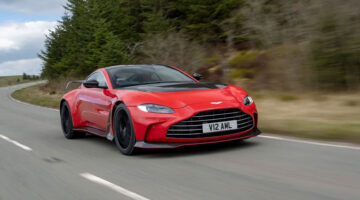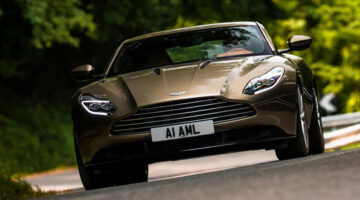Aston Martin’s smallest model isn’t as polished or broadly talented as a Porsche 911, but has its own very distinct appeal
| Dominating powertrain, balanced and playful chassis | |
| Can feel bulky and sometimes unwieldy, doesn’t engage like the best in class |
When the first modern-era Aston Martin V8 Vantage arrived on the scene in 2004 it marked something of a high point for a brand that always feels like it’s on the precipice of disaster. Following the suave DB9, the V8 Vantage took its appeal, distilled it into an even more attractive two-seater body designed by Henrik Fisker and overlaid it with a brutish character that helped it become Aston’s biggest ever seller.
So when its replacement was announced in 2018 with more power, more tech and a dramatic new look, all eyes were on it once again to not just be a brilliant sports car, but to also secure Aston’s financial future – something it so far has not quite achieved.
Since its launch there has been an expansion and contraction of the range, with a Roadster derivative showing up in 2020 sporting a brand new front end that’s also optionally available on the Coupe.

There was also a 200-unit limited-run AMR model that launched in 2019 with a Graziano seven–speed manual transmission, subsequently then being available as an option on series-production Vantages, before being dropped again in 2020.
More recently, Aston Martin decided to leverage its Formula 1 campaign with the F1 Edition. More of a tweaked base car than true Porsche GT3 rival, the F1 did bring with it valuable chassis and calibration changes that sharpened up the package. Since then, a flagship V12 Vantage has also been revealed, but unlike the previous model is strictly limited in number, with only 300 units being built and all being spoken for before it was publicly announced.
So there’s a lot going on with the Vantage, but the key thing to keep in mind is that despite the challenges, it remains one of the most engaging and charismatic sports cars on sale. If ultimate, track-going capability is what you’re looking for then some rivals do it better. But if you’re wanting a brutish, charismatic and exciting sports car that looks like nothing else on the road, the Vantage certainly has its appeal.
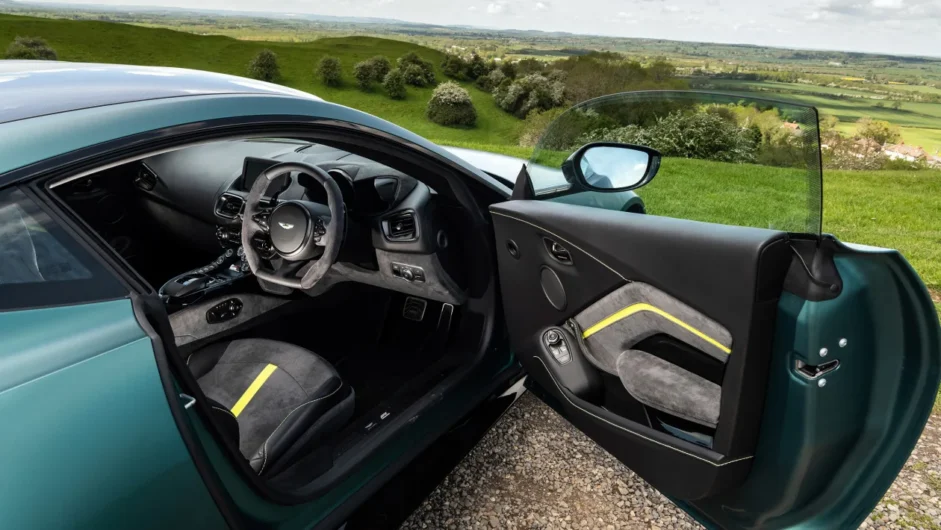
Prices, specs and rivals
Despite only arriving in 2018, the upper sports car class is a very different place in 2022, with sales stalling on all but a few models (namely the incessantly popular Porsche 911), making it a tough market to crack for any contender. The Vantage’s base price has risen to $160,900, and coupled with the fact it classically sits at the steep end of its comparison base it continues to be a rung above most key rivals.
Said rivals include that Porsche mentioned above, which starts at $122,615 for a Carrera S. Standard equipment is compromised in the Porsche, but even with a few choice options it will still undercut the Vantage substantially. The even more capable and engaging GTS is $136,690, and if we’re ignoring availability or daily drivability for a second, you can’t ignore that the GT3 is only $530 more than the Aston at $161,420.
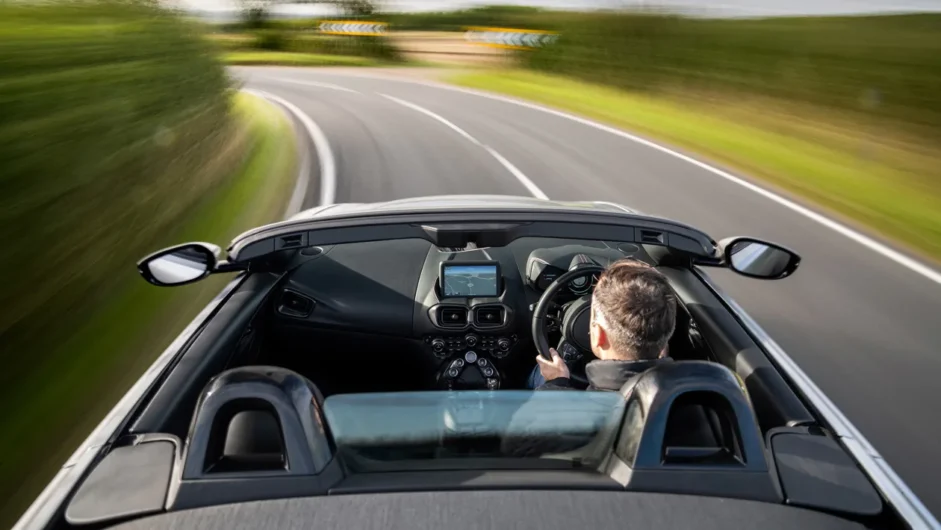
Audi’s mid-engined R8 has been rationalised to one rear-wheel-drive model and one all-wheel-drive model. The base R8 RWD Performance also starts below the Aston at $159,280, comes with significantly more power, a more exotic V10 powertrain and that mid-engined chassis. Luckily for the Aston, the Audi has some set-up and engagement issues, but it still feels like a lot of car next to the Vantage.
Mercedes-AMG is on the cusp of launching a new GT that – even more than its predecessor – will mimic the Aston in layout and tech. McLaren’s smallest Artura is now priced way over and above the Aston Martin though, at $223,970.
Vantage Roadsters are priced higher at $168,746, with the F1 Editions more again at $188,630 for the coupe and $195,990 for the soft-top. The V12 Vantage has not been priced, and won’t likely need to be publically as it’s already sold out.
Engine, gearbox and technical specs
Under the Vantage’s vast clamshell bonnet is the same M177 Mercedes-AMG twin-turbo 4-litre V8 that’s also pressed into service in the DB11 and DBX SUV. As in those cars, it’s connected to an eight-speed ZF automatic transmission that’s mounted in a transaxle together with an electronically controlled limited-slip differential.
As denoted by its M177 moniker, the Vantage’s V8 is a wet-sump unit, unlike the dry-sump M178 as was used in the previous AMG GT, and largely shares its specifications with the unit found in the C63 S. There are changes, specifically around the bespoke induction and exhaust systems and the remapped ECU. Since the installation of ex-AMG boss Tobias Moers in the top job, Aston has been given the green light for more extensive changes to the powertrains, which we expect to come on stream alongside the Vantage’s wider update in 2024.
Still, the base V8’s vital statistics of 503bhp and 505lb ft of torque are hardly to be sniffed at. The latter figure is developed at just 2000rpm, hinting at some real muscle for the rear wheels to cope with, but more on that later. F1 Edition cars have a slight power bump to 527bhp thanks to a further tweak of the ECU, but torque remains the same, albeit over a wider section of the rev range.
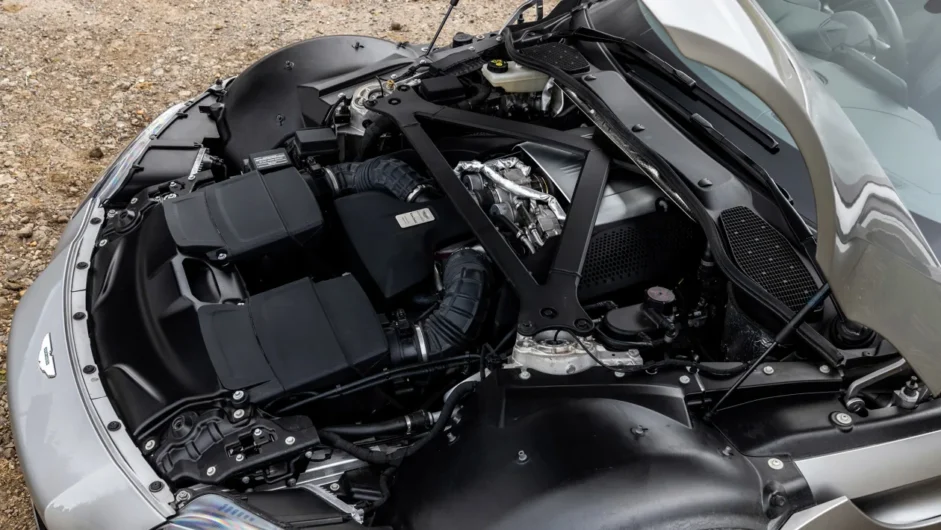
The previously optional seven-speed manual transmission was developed from the dog-leg unit used in the previous-generation V12 Vantage S. Although it lacked finesse, it did unlock a more immersive side to the Vantage’s driving experience despite a restricted 461lb ft torque figure. This was accentuated with its pairing to a completely mechanical limited-slip differential and not insubstantial 95kg weight loss – although it is worth noting that it did have an effect on front-to-rear weight balance. All-in, it’s expected that including the 200 AMR units, no more than 400 Vantage manuals ever rolled off the production line, making it a sure-fire future unicorn in the same vein as a Ferrari 599 GTB with a H-pattern between the seats.
Under the skin the Vantage uses a shorter version of the bonded aluminium architecture first seen on the DB11. Over 70 per cent of the components used are new, with a focus on greater rigidity giving the suspension more solid foundations to work from. Also new are the subframes, which carry the multi-link rear axle and double wishbone front suspension. Roadster models don’t have an appreciable disadvantage in terms of structural rigidity, the small cabin and high scuttle helping keep the body resilient over rough roads. There are some reinforcements to the sills and underbody, but thanks to a simple and lightweight roof mechanism the Roadster’s 60kg weight gain is commendable. Overall, at 1628kg for the Roadster and 1530kg for the Coupe (both dry weights), both might seem on the chunky side, but thanks to the chassis’ inherent control and stability, plus the V8’s prodigious torque, it’s only at the very limit of adhesion that the weight becomes felt.
As with the DB11, the Vantage features extensive use of hidden aerodynamics. Despite its clean profile the Aston actually delivers genuine downforce, a feat that’s been achieved courtesy of a front splitter, vents in the front wings, a number of underbody channels and a huge rear diffuser.
Performance and 0-100kph time
As you’d expect, the Vantage is a lively performer, with the 0-100kph dash delivered in 3.6sec (over a second quicker than the old car), while top speed is a heady 314kph (the Roadster’s acceleration time is equally impressive – just two-tenths slower to 100kph, and going on to a 305kph top speed with the fabric roof in place). That said, in reality it can’t quite match those acceleration times unless the tarmac is both dead dry and warm, thanks to an inherent traction issue. However, once rolling the Aston gathers speed with real intent, the tidal wave of torque catapulting the car up the road.
It may not be as rabidly quick as a Porsche 911 Turbo, but it’s not far behind. The tweaks to the ECU have also resulted in a more linear delivery, so despite the breaks in traction it doesn’t feel as if the unit is dumping all its torque on the road in the same way an AMG does. The Coupe F1 Edition, despite its subtle power advantage, has identical figures on paper to those of the standard Coupe, with the Roadster F1 achieving the 0-100kph dash in 3.7sec and sharing the standard Roadster’s 305kph top speed.
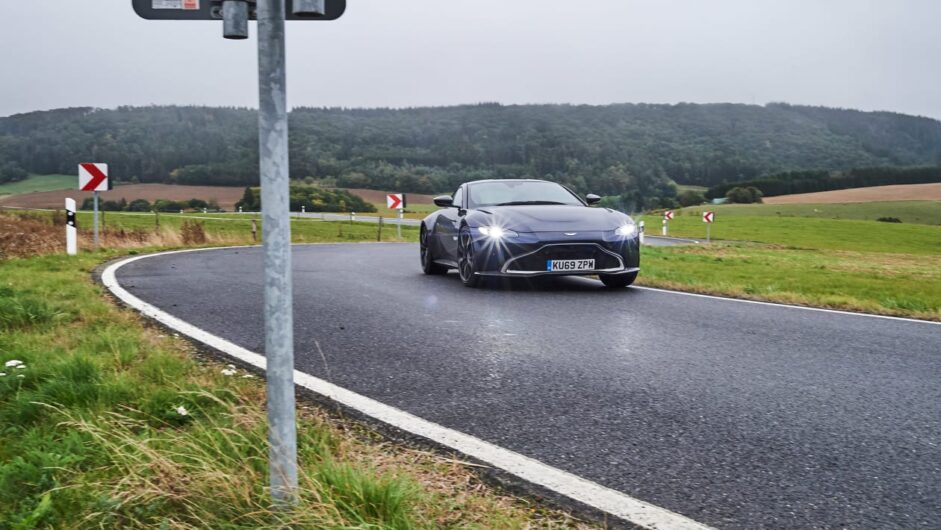
The transmission is best in its standard setting, where it responds crisply to the column-mounted paddles and shifts ratios smoothly and quickly. The sportier settings deliver fractionally quicker changes, but the rather abrupt shifts aren’t worth the trade-off. That said, when left to its own devices it’s surprisingly responsive in Sport+, slipping down ratios for corners and holding on to revs for maximum acceleration. F1 Edition cars have a slicker calibration than the standard cars, with less of a jolt to full-bore upshifts in the most aggressive modes.
Arguably the best part of the engine is the noise. It sounds a little subdued in Sport, but switch to Sport+ or Race and the V8’s sonic potential is uncorked. The changes to induction and exhaust deliver a richer, more cultured soundtrack than the bombastic NASCAR bellow you get with this engine in a Mercedes. There’s a pleasant burble at idle that builds to a crackling roar at the red line that’s pure Aston Martin. The noise is all the more remarkable when you consider the oddly small pea-shooter tailpipes of the standard exhaust. The Sports Exhaust option unlocks even more volume and theatrics, but the era of dumping unburnt fuel into the exhaust manifold for the sake of a few pops and bangs feels a little out of touch with the times.
Ride and handling
If you’ve followed our Vantage reviews from the start you’ll know we had some big reservations over the early cars. The good news is that each Vantage we’ve driven since has been a vastly better effort, and is a genuine alternative to 911s and R8s. While it couldn’t be considered perfect, its ability to pair entertaining dynamics with long-legged cruising ability feels, quite appropriately, very Aston Martin.
Those imperfections? Well, for starters, it feels big. At 2153mm it’s 129mm wider than a modern 992 Porsche 911 Turbo, a fact that is exacerbated by the Vantage’s low-slung driving position, high-set dashboard and slimline windscreen. It’s certainly not a car that feels instantly intuitive to drive, the corners of the car can be difficult to define, and its outright width means you’ll catch more than a few catseyes in the first few kilometers of driving.
Beyond this initial intimidation, however, its quick but precise steering allows you to soon build a level of trust in the front end, and revel in the stunning amount of adhesion it’s able to generate. The ride, although initially somewhat stiff-legged at low speeds, quickly finds a rhythm with the surface, its slight lateral movement reinforcing the messages being portrayed from both the steering and chassis underneath you.
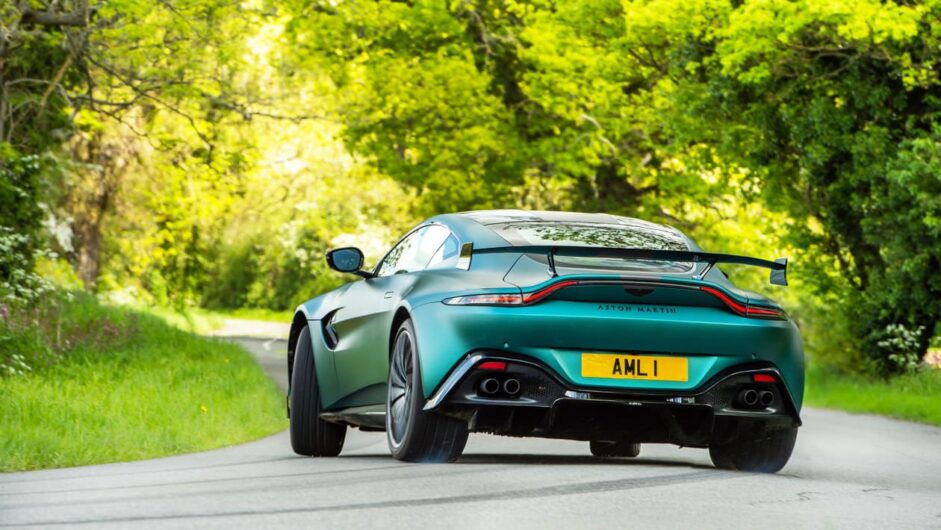
In its most relaxed modes, the standard-fit adaptive dampers give the Vantage a particularly calming ride on the motorway, where it’s among the more relaxed of its peers.
Start to increase your speed and the inherently low driving position makes you feel like you’re at the centre of the roll-axis both longitudinally and vertically. As such, it makes the Vantage feel incredibly agile, and when combined with the softer damping mode feels full of energy and response. In faster corners or on more challenging road surfaces, where more control is required, the firmer damper modes come into play, locking down the body with more of an iron grip.
Ultimately it’s still not as composed as a 911 or R8, but the car’s movements are always predictable. Traction is a marked improvement on earlier cars, the rear axle now taking the turbocharged V8’s power in its stride (though you can’t take too many liberties with 505lb ft to play with).
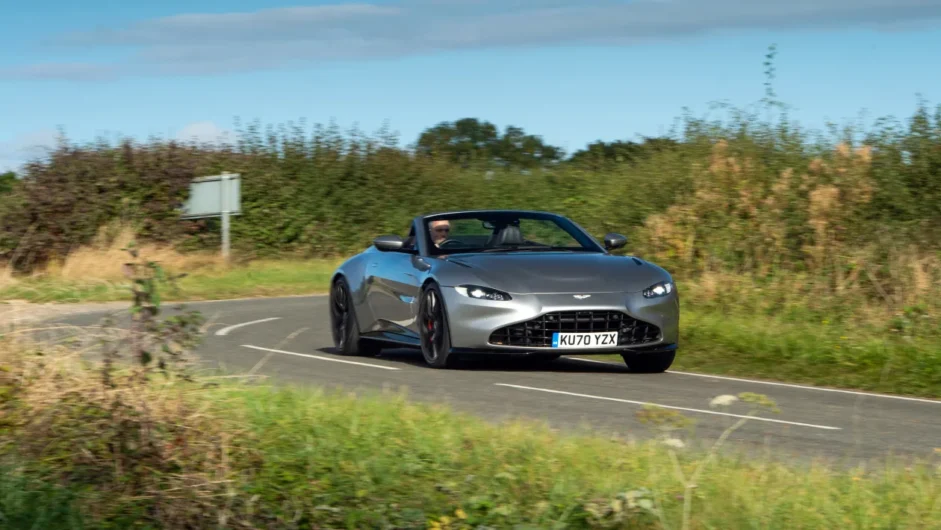
Start to really explore the throttle at the limit of grip and the Vantage’s sweet balance then reveals its true self, with a demeanour that’s nothing like as snappy as the four-square proportions might suggest. The connection to the rear axle makes the excessive torque on tap a willing partner, encouraging small snips of oversteer that are easy to catch thanks to the quick and precise steering.
The on-board traction management system might be a little ham-fisted generally, but the stability control’s calibration in Sport mode is especially impressive, allowing you to really lean into the system without taking things too far off course. The F1 Edition takes these inherent qualities and amplifies them to great effect. It’s still no GT3 rival – few cars are – but it’s certainly a welcome addition to the range, even with its questionable aesthetic updates and limited personalisation options.
The Roadster takes things in the opposite direction, the subtle increase in weight making the suspension work harder to keep the chassis under control, but not to the detriment of ride quality. This ten per cent reduction in finesse is made up for by the Roadster’s appeal, though – this is one fine open-top sports car, feeling more flamboyant and playful than a Porsche 911 Cabriolet.
L/100km and running costs
It’s unlikely that those dropping the best part of $160k on a car are going to be having sleepless nights over the cost of a refill, but for the completists here are the numbers. So, Aston states 263g/km CO2 emissions and a 11.6L/100km return at the pumps. You’ll have to treat the latter with a pinch of salt, as low 20s is more realistic with gentle use.
With such aggressive geometry at both ends, and a penchant for torque, budgeting for a new set of the Vantage’s Aston Martin-specific Pirelli P Zeros every eight to 12 months is a worthy enterprise.
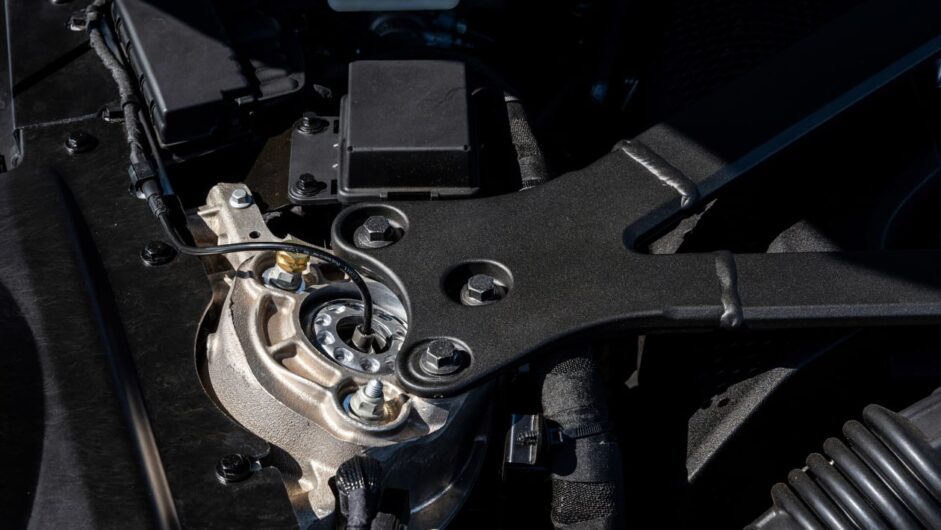
After living with one on the evo Fast Fleet for six months, we can also confirm that while the powertrain and transmission are largely bulletproof, some of the Aston Martin-specific changes do have a lead-on effect. The Vantage’s single-opening front end design doesn’t appear to have the same efficiency in cooling the inherently hot-running V8 engine (it is called a hot-V, after all).
Over our experience, aside from a sticky passenger-side window, the only other issue we had was a fault with the coil packs, which were replaced under warranty.
On the plus side, Aston is offering the Vantage with a complimentary five-year servicing package, which should take the sting out of maintenance bills and help the residual values.
Interior and tech
Inside, the Vantage takes a radical departure from its predecessor. Gone are the analogue dials and creaky, outdated infotainment system, to be replaced with bold design defined by new organic forms. There’s a TFT screen ahead of the driver, while the infotainment system is pure Mercedes (as is the single-stalk controller for the indicators, wipers and main beam).
The rest of the switchgear is scattered across the wide transmission tunnel, including the starter button, which is a similar shape and size to the fan-speed controller above it, resulting in the odd fumbling moment as you try to start the car but succeed in only adjusting the air con.
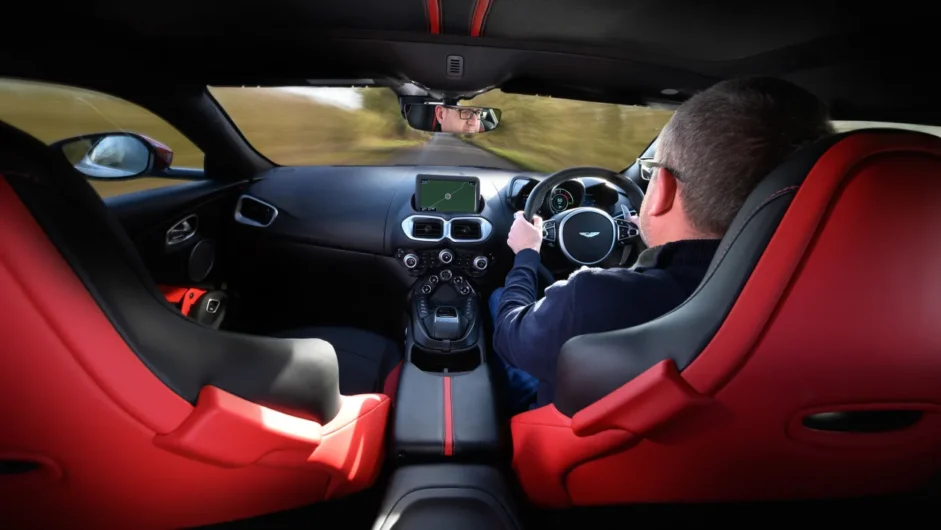
Practicality is good. The trademark hatchback means easy access to a boot that has Porsche 911 and Audi R8 beaten for carrying capacity. The cabin is roomy, as well, with a little extra storage space behind the front seats.
But the best bit is that the Vantage feels incredibly special. The interior is almost completely covered in waxy, luxurious leather, and is a definite step up over all rivals in terms of material quality, if not outright build quality. This is a key, and somewhat overlooked, characteristic of all Aston Martins, and one the Vantage does not disappoint in.
Yes, the dash design is rather scattered and its generations-old Merc infotainment can be a bore to use, but everything you touch and smell reeks of that handmade, specialist feel that no rival from Germany can mirror.
Design
So there’s always been a critical factor to the current Aston Martin Vantage’s exterior design which has inexorably held it back. Its predecessor, the V8 Vantage from 2005, is quite possibly the best bit of contemporary car design ever. Henrik Fisker, who also penned the larger DB9, gave the Vantage some almost impossibly stunning lines, shrink wrapping his technical yet finessed surfacing style atop the VH-II platform with stunning results.
This no doubt made life very difficult for Aston Martin and its current EVP and creative technical officer Marek Reichman, who didn’t just have to reimagine the Vantage, but do so in an environment of ever more technical, complicated and exaggerated forms that the market demands. Reichman had all the tools, though, with an equally stunning set of proportions and a remit to create something with more visual aggression.
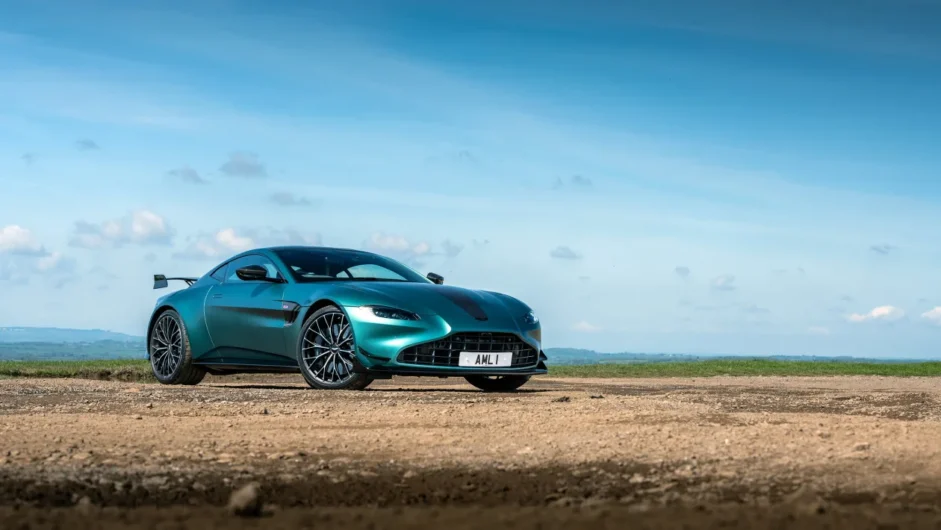
It’s safe to say that initial responses didn’t go down too well, largely on account of the ‘Hunter’ grille. This first, large-scale adaptation of the classic Aston grille shape occupied the front end’s lower fascia, but left only the tiny, somewhat unresolved headlights to break up the huge unadorned clamshell bonnet. Other elements, such as the somewhat awkward lighting signature at the rear, over-accentuated lower sills and rear diffuser all overrode the Vantage’s stunning proportions.
Other elements were marred by production processes that turned otherwise extremely clever and brave details into clumsy points of contention. Things such as the unresolved junctions surrounding the side strake between the clamshell bonnet, lower wing panel and front door didn’t sit right – how could they with three different panels, each made from three different materials via different manufacturing processes.
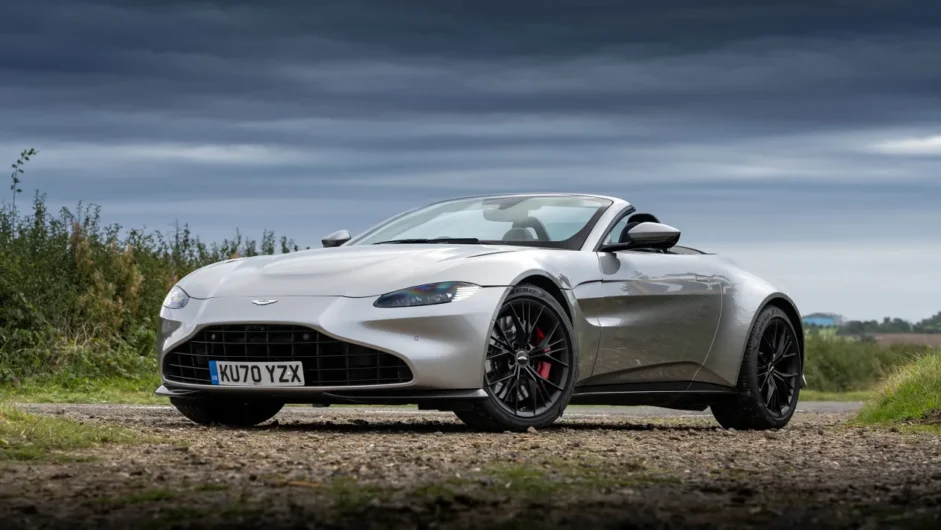
Yet look beyond these elements and the overall design is not defined by its huge arches, grille or clumsy details, but the fact Reichman and his team bravely decided not to give the Vantage a typical wedge (or rising beltline towards the rear), but instead a falling tail as it reached the pert rear, leaving the cab and its trailing edge to form the distinctive ducktail on its own. The Hunter grille was another moment of brilliance, as it allowed the bonnet’s surfacing to do the talking – something the non-metallic chartreuse yellow launch colour seen on the first publicly viewed examples completely masked.
With tighter shut lines, a more resolved side strake, a removal of the rear light bar (which did little more than make for some messy junctions around the tail and exaggerate the narrow cab) and a finer hand to the lower sills, splitter and diffuser, the current Vantage might well have been just as visually successful as its superb predecessor.
Unfortunately, the modifications made by the team in subsequent Roadster and F1 Edition models haven’t helped – the traditional slatted grille only makes the nose look even more contrived (thankfully the original grille is still available). Despite these issues, though, the Vantage is still a spectacular-looking vehicle, especially when moving through a landscape as opposed to rotating on a motor show turntable.
This article originally appeared at evo.co.uk
Copyright © evo UK, Dennis Publishing

